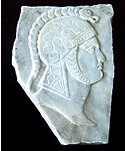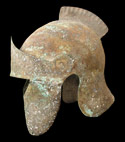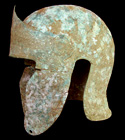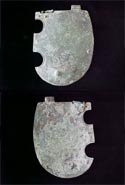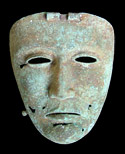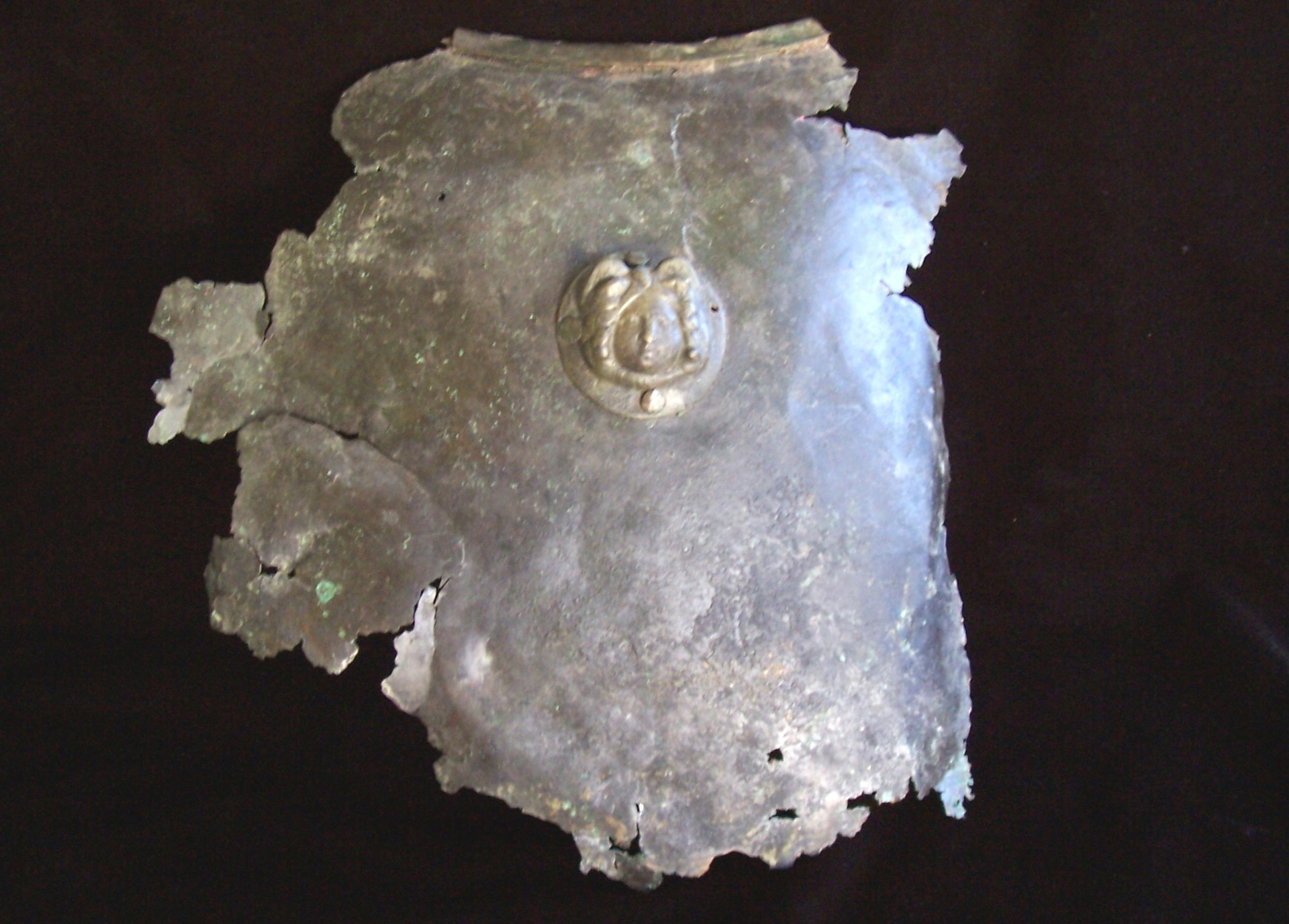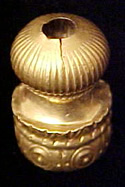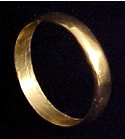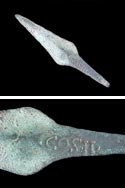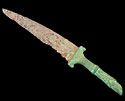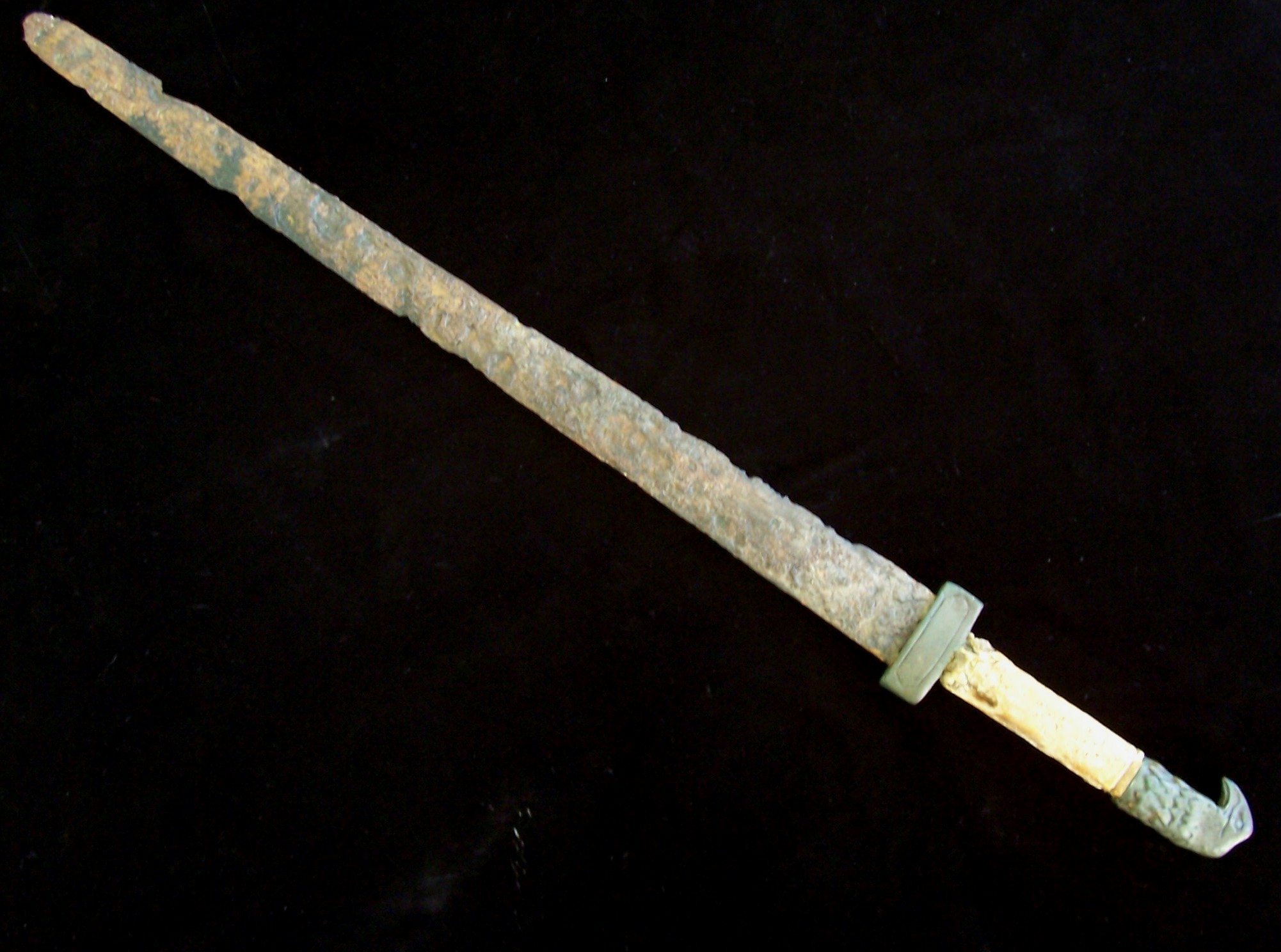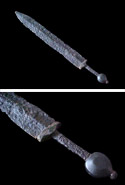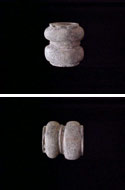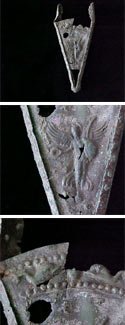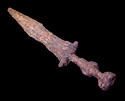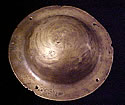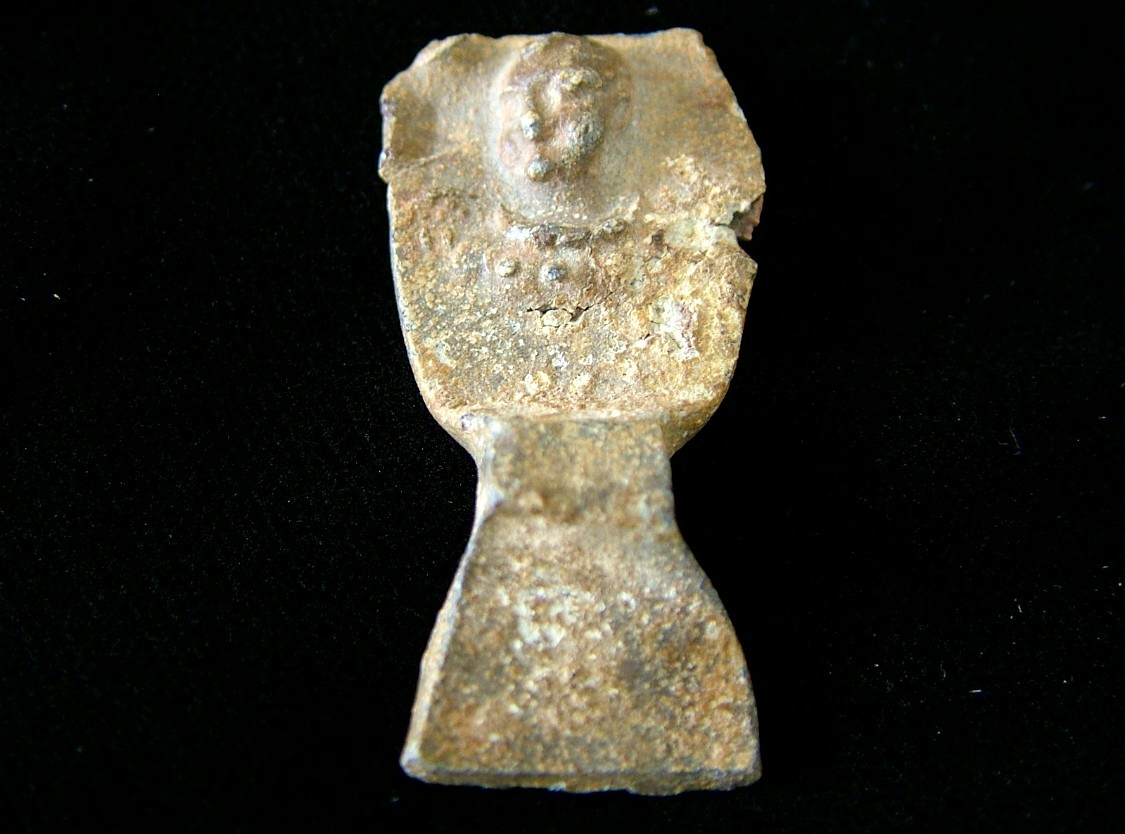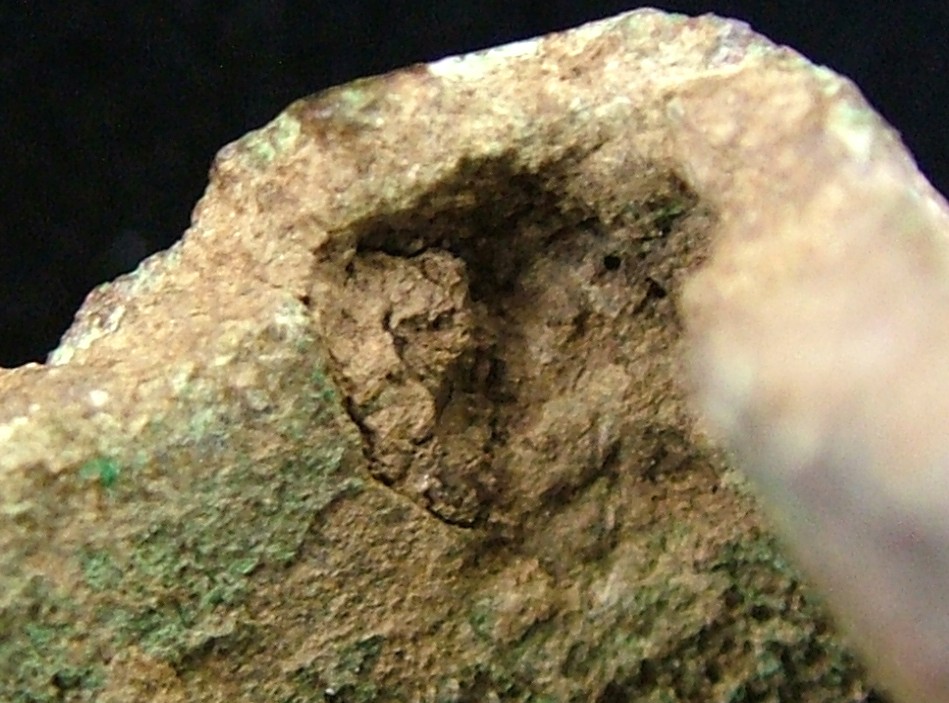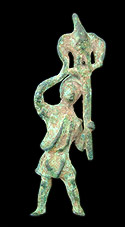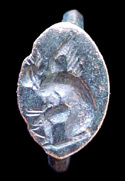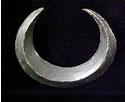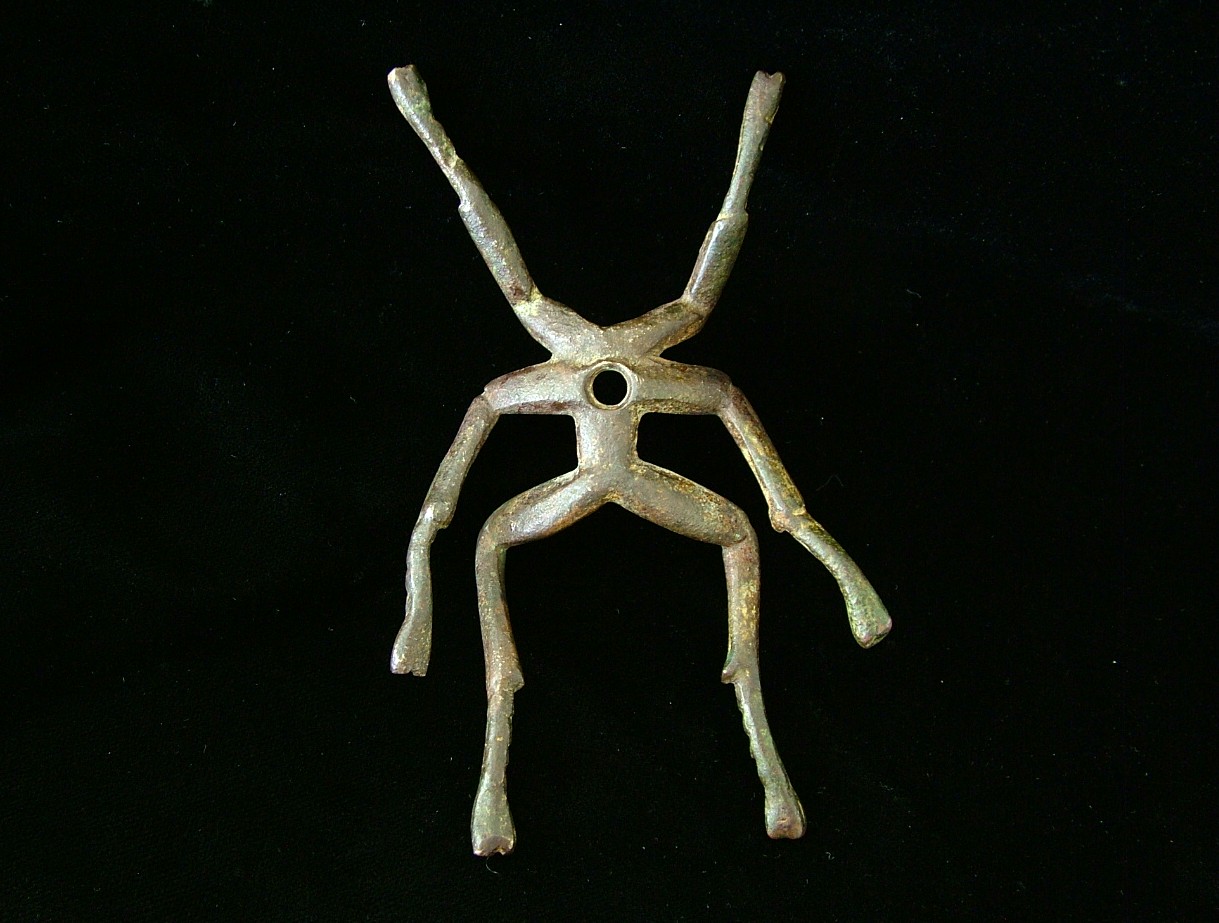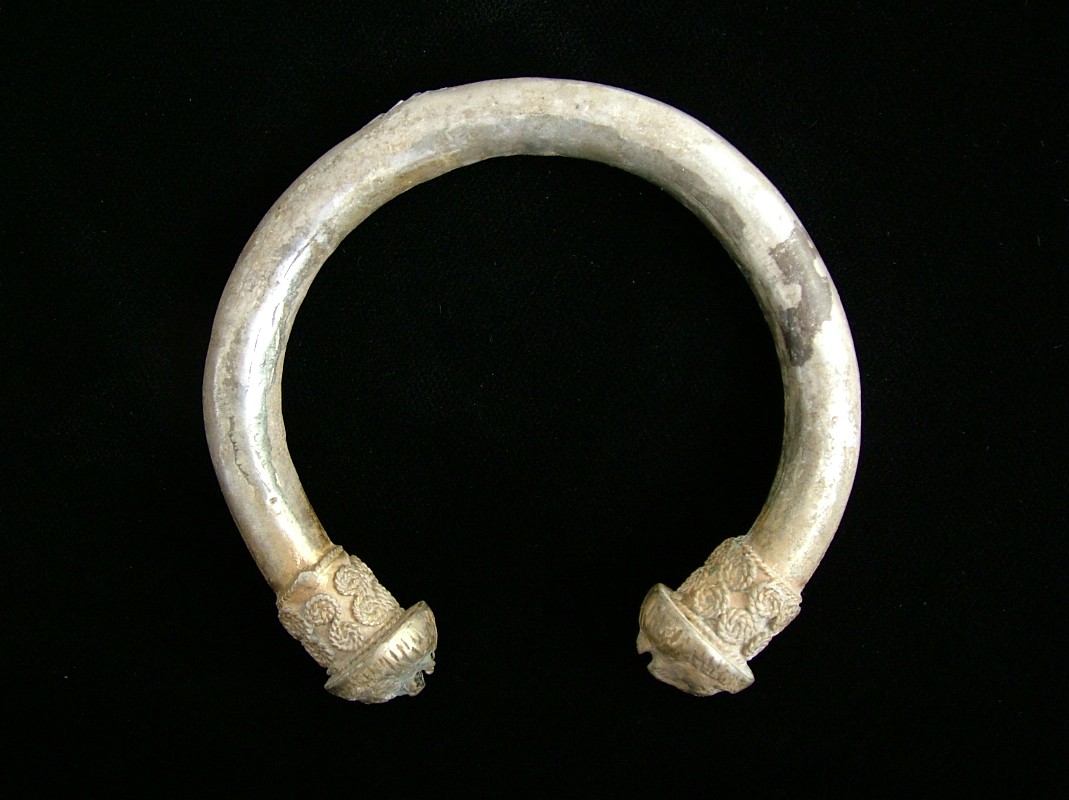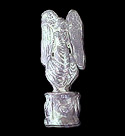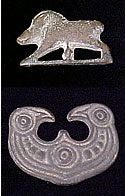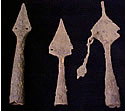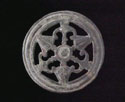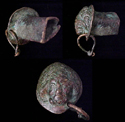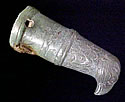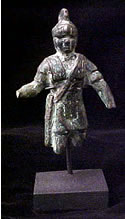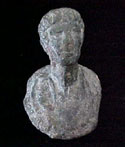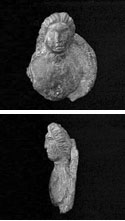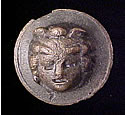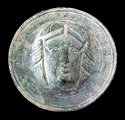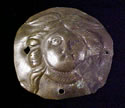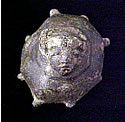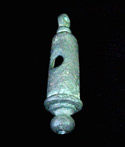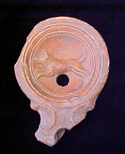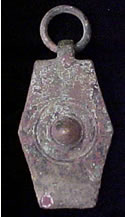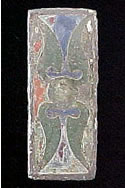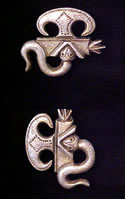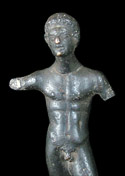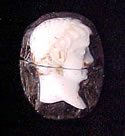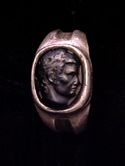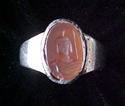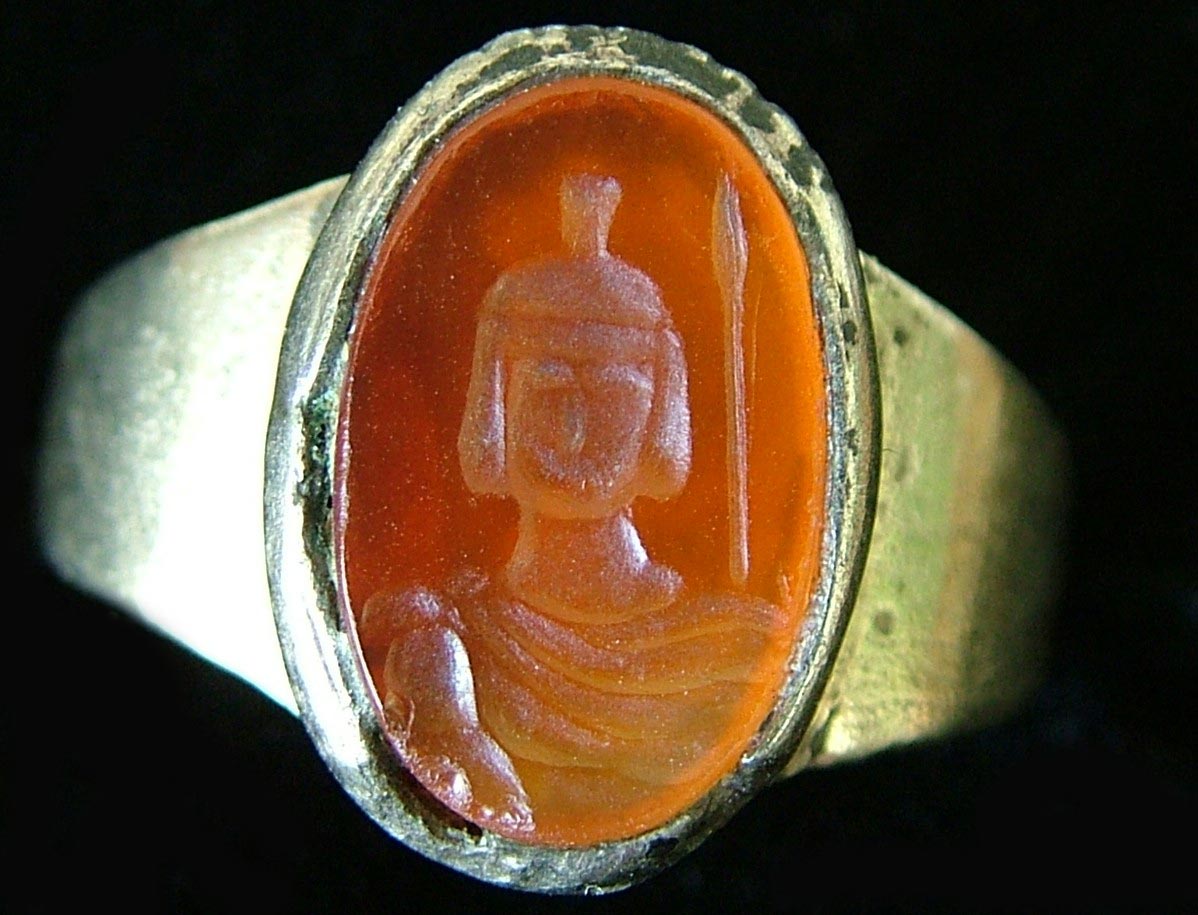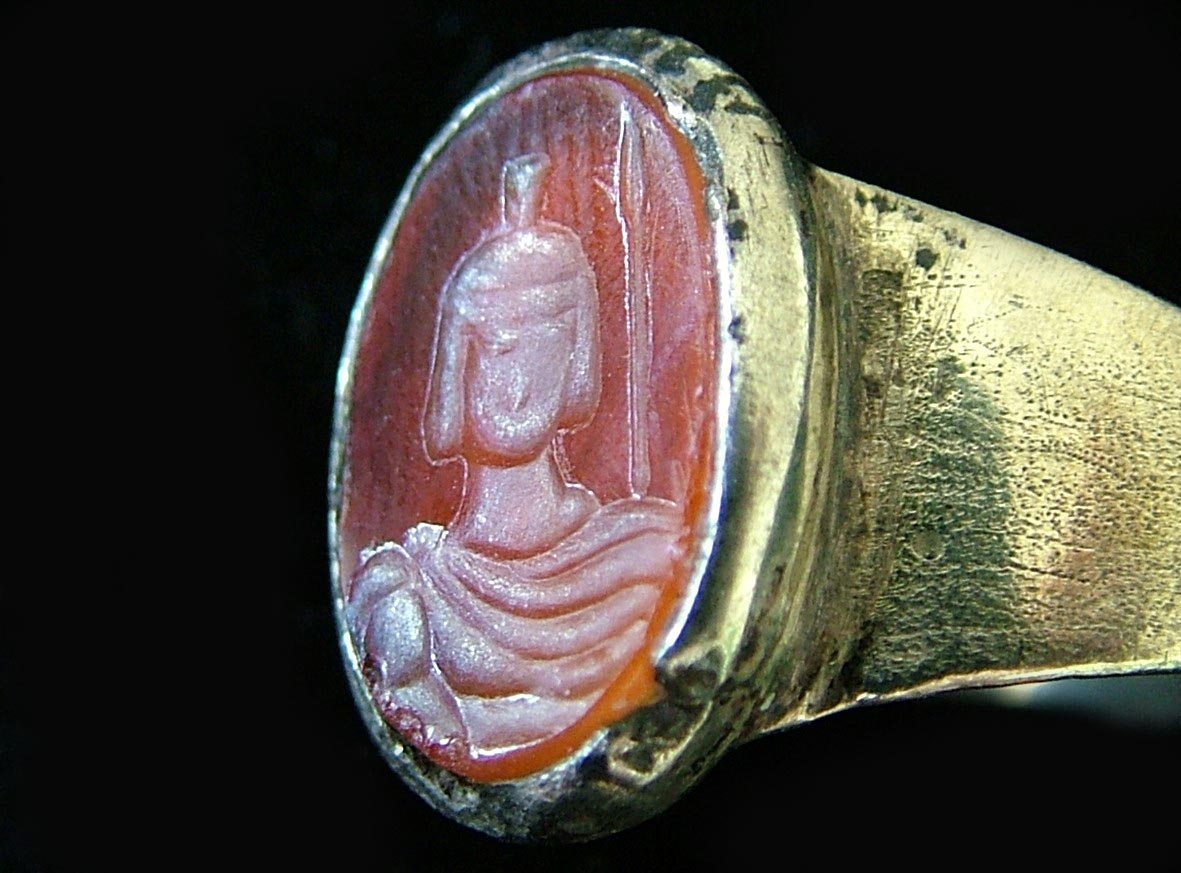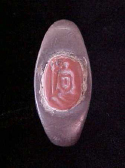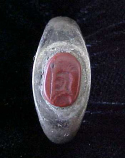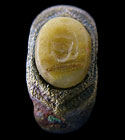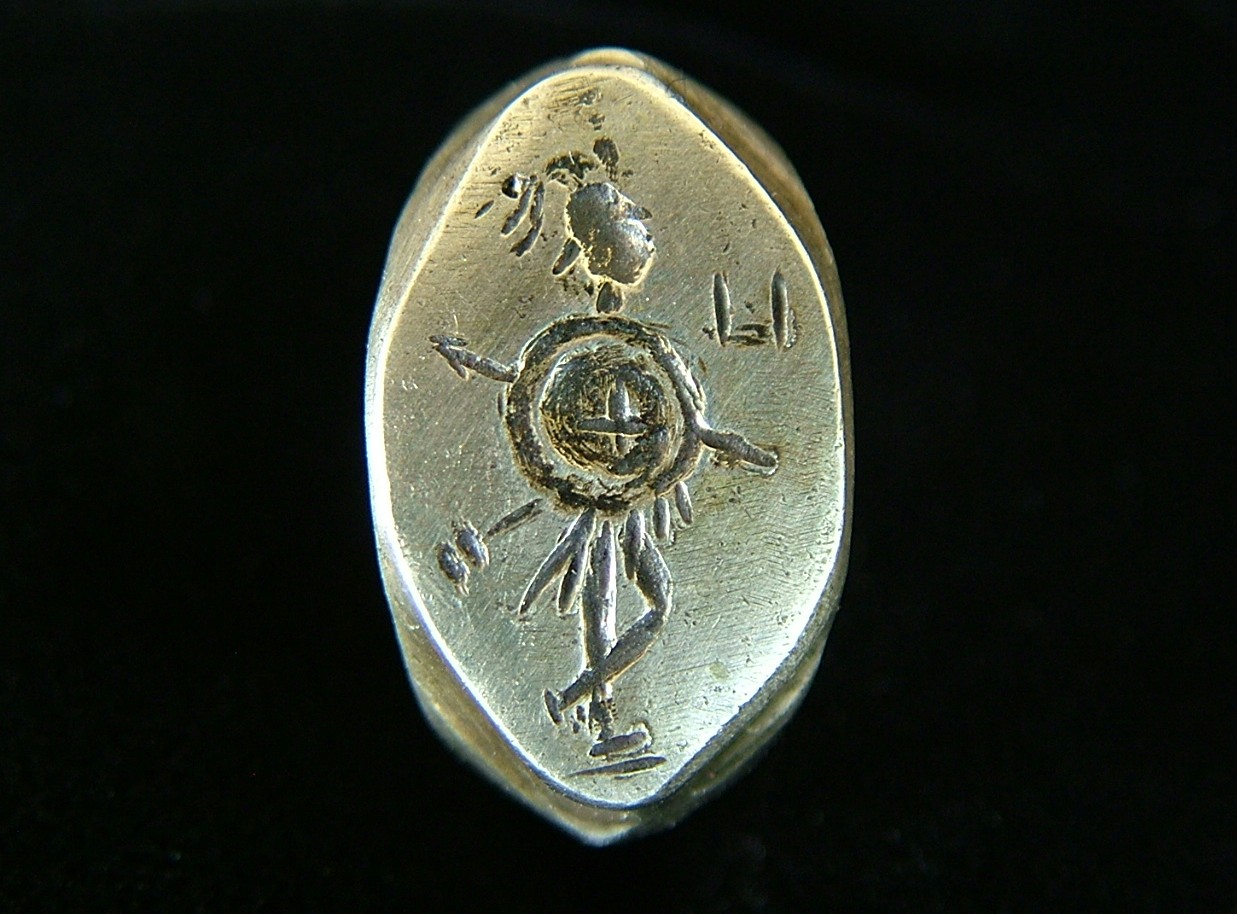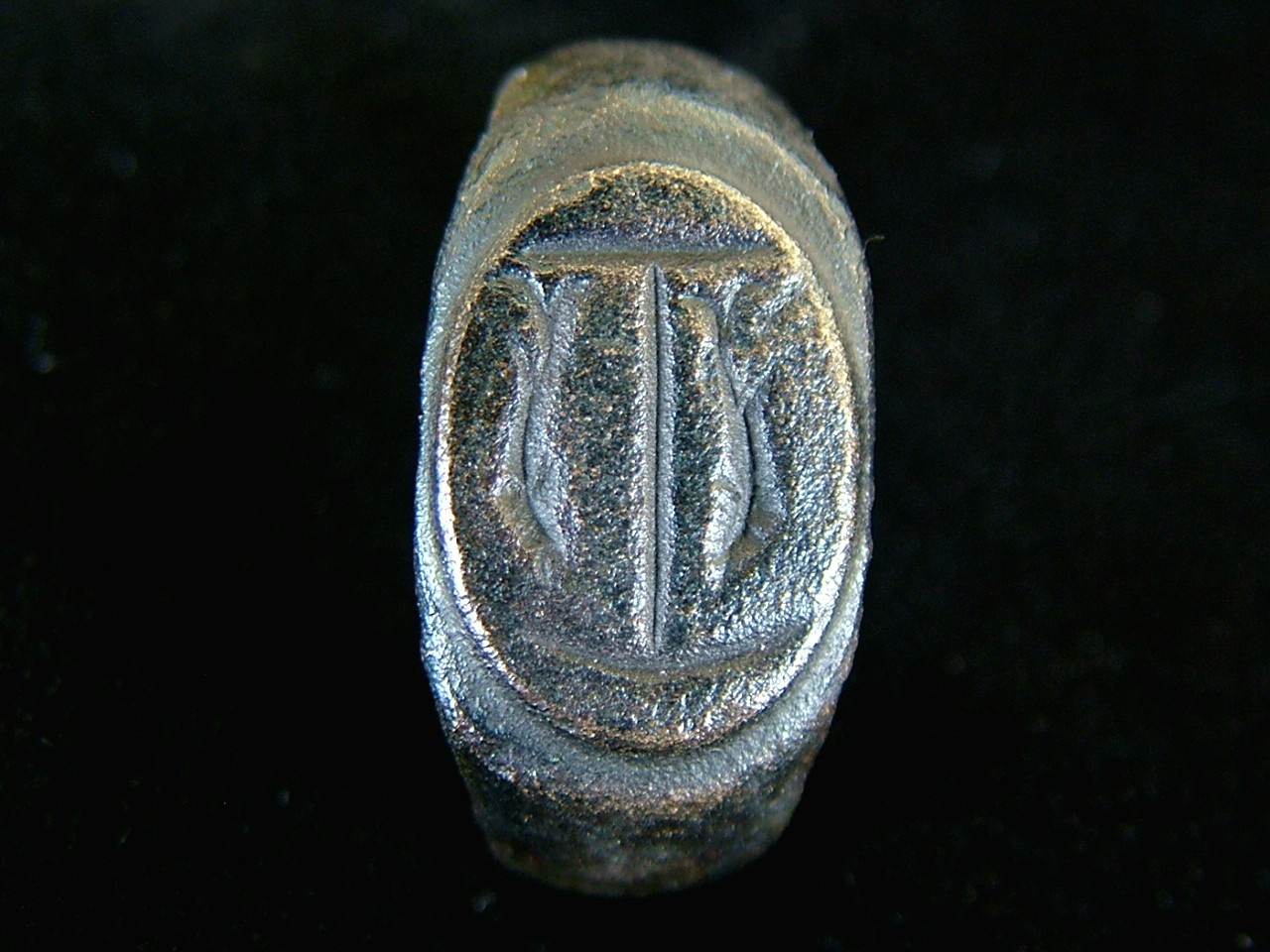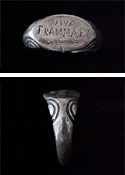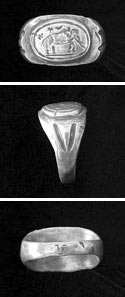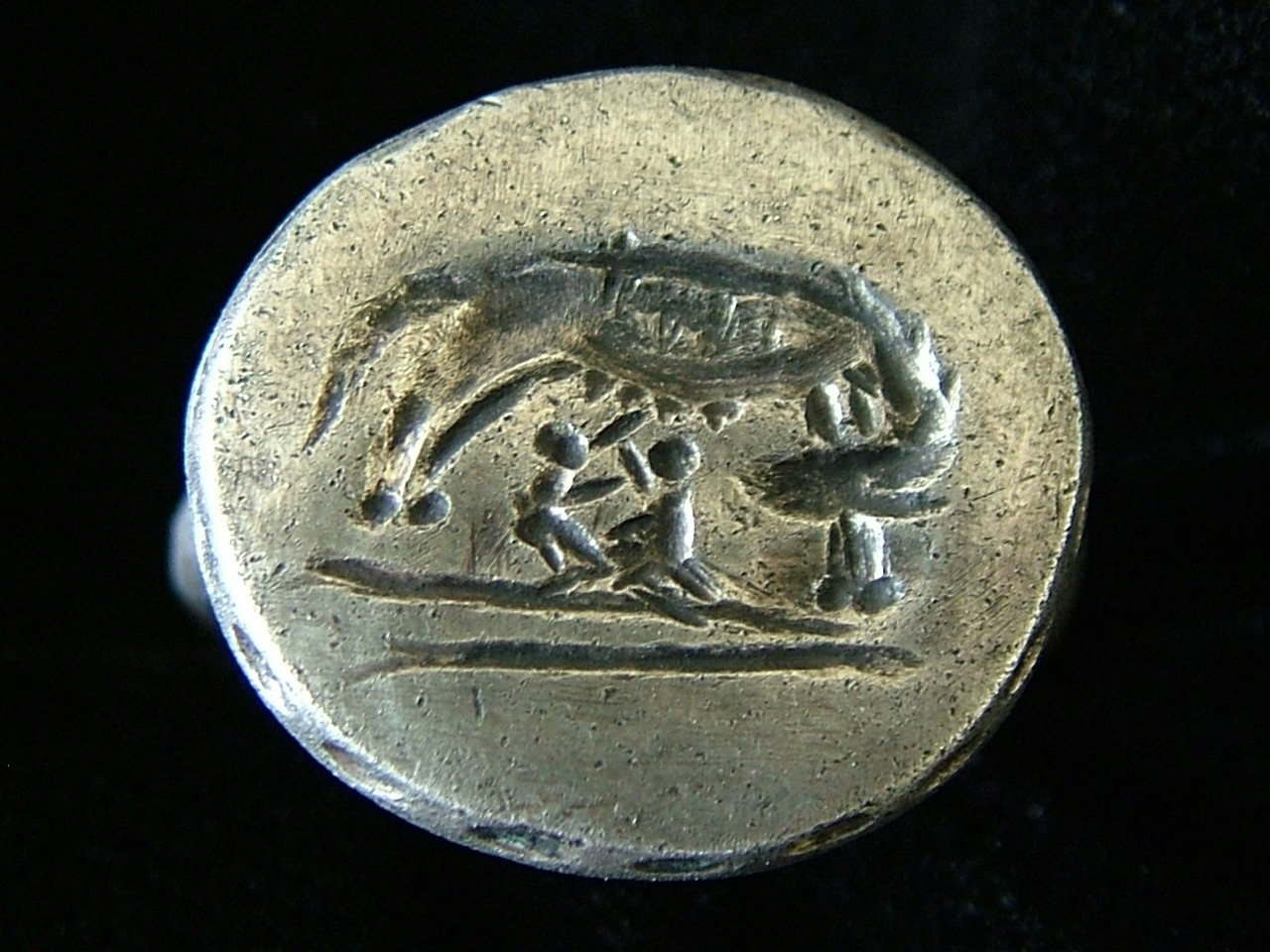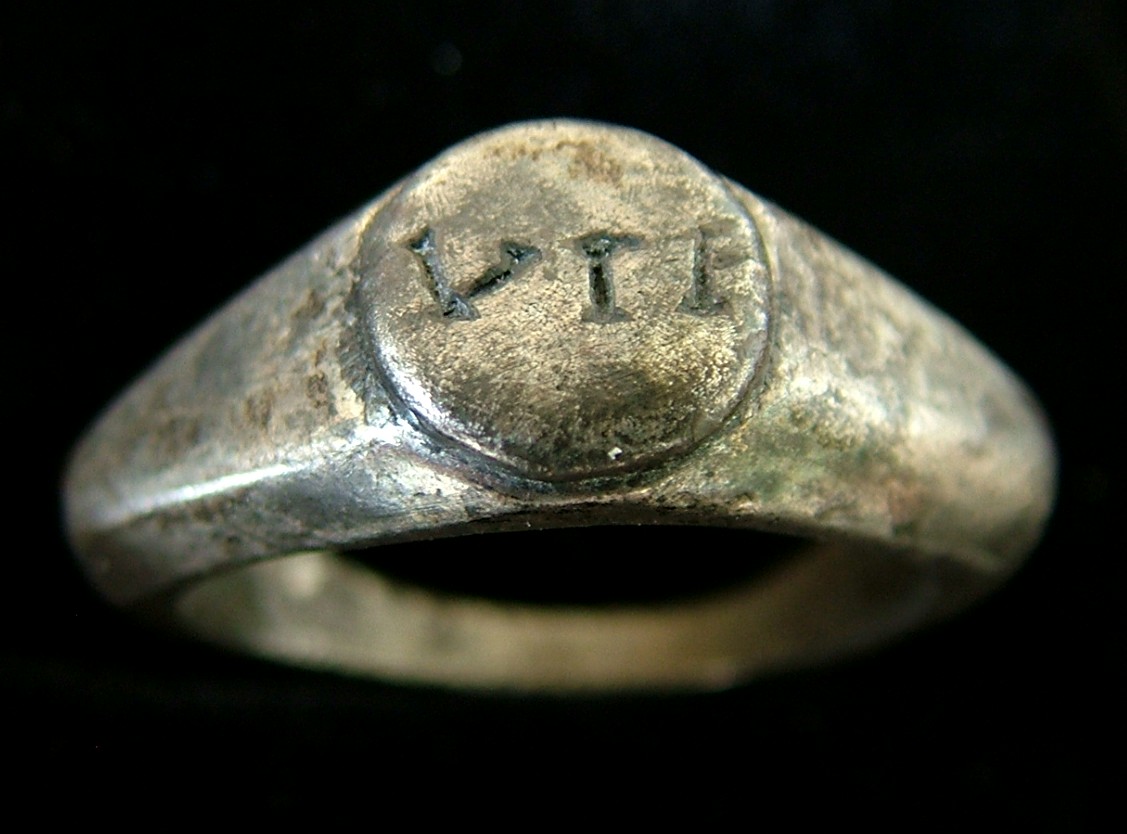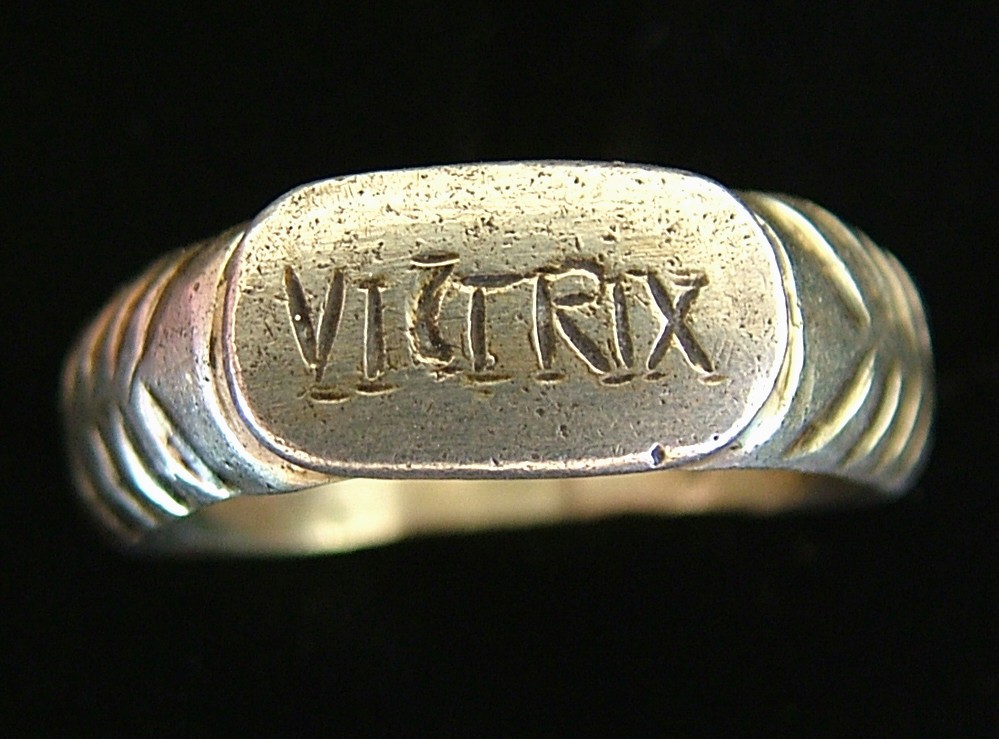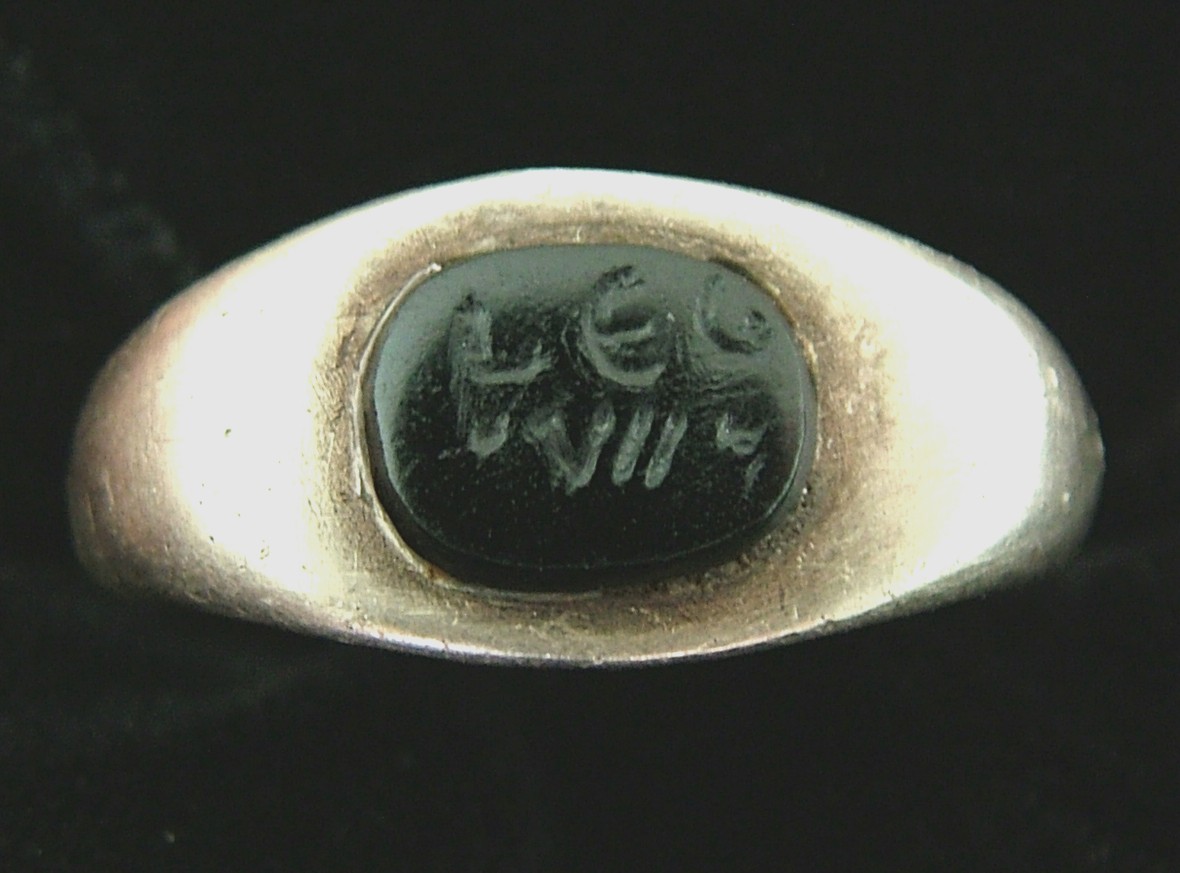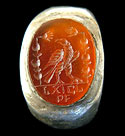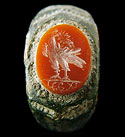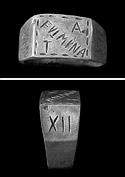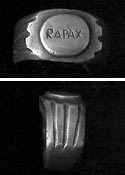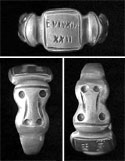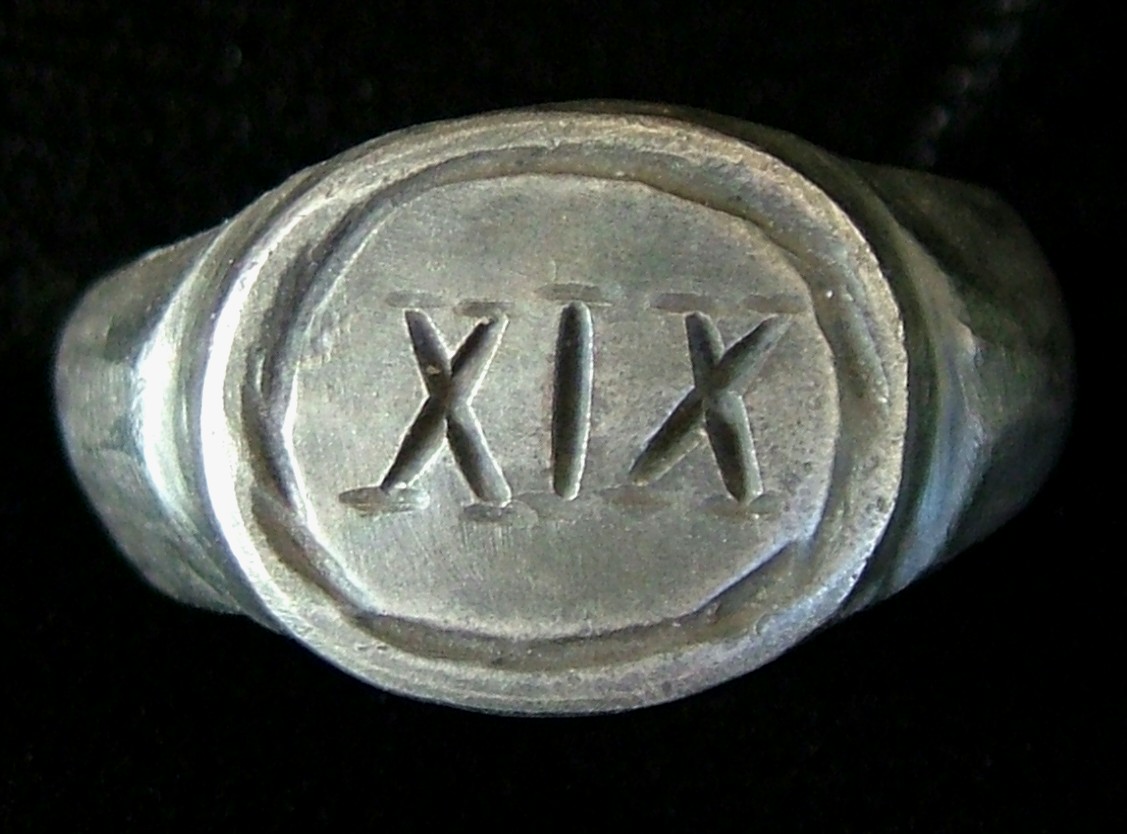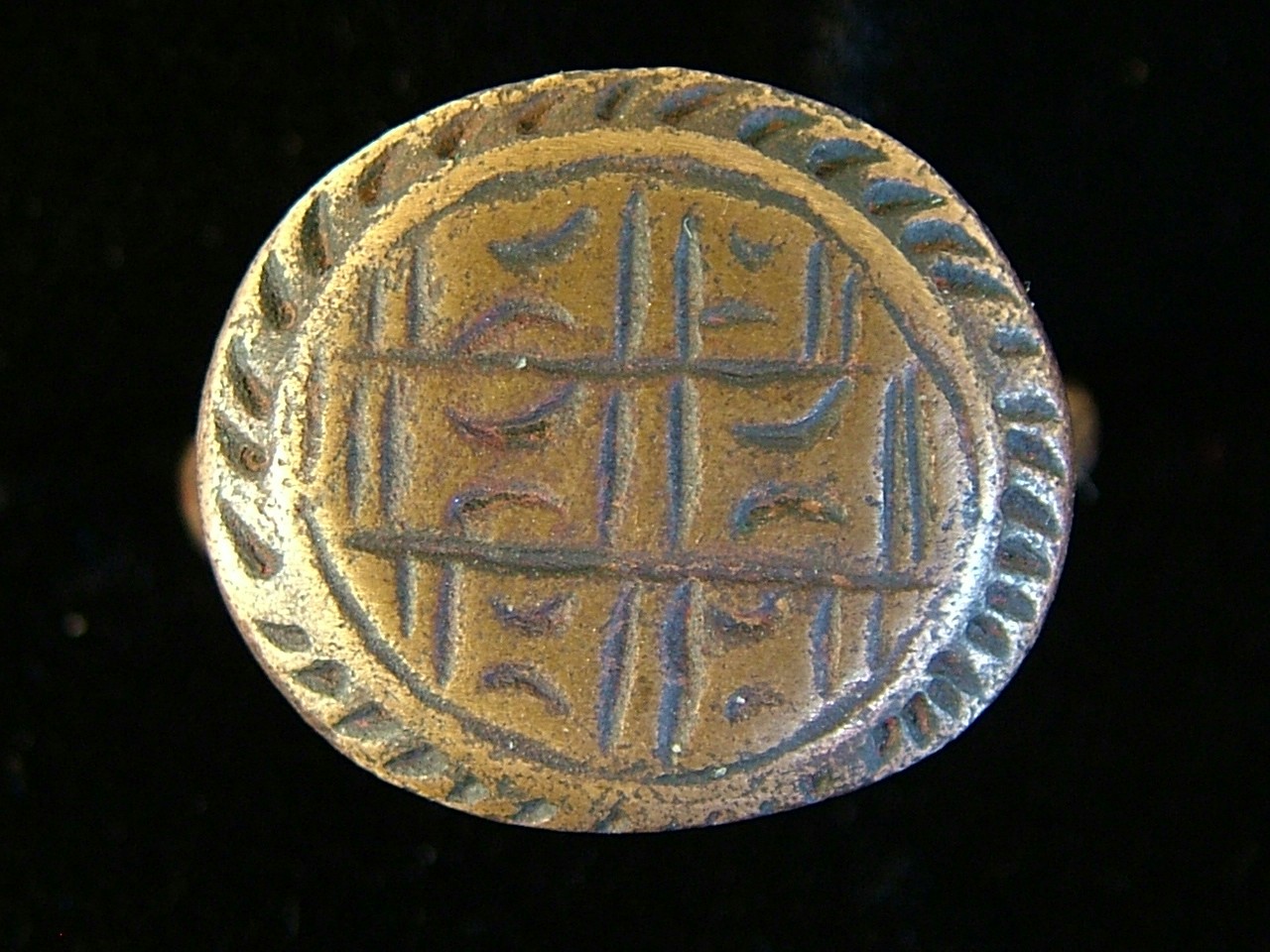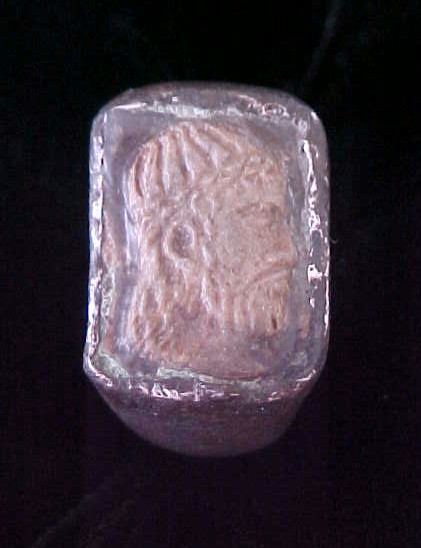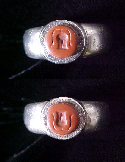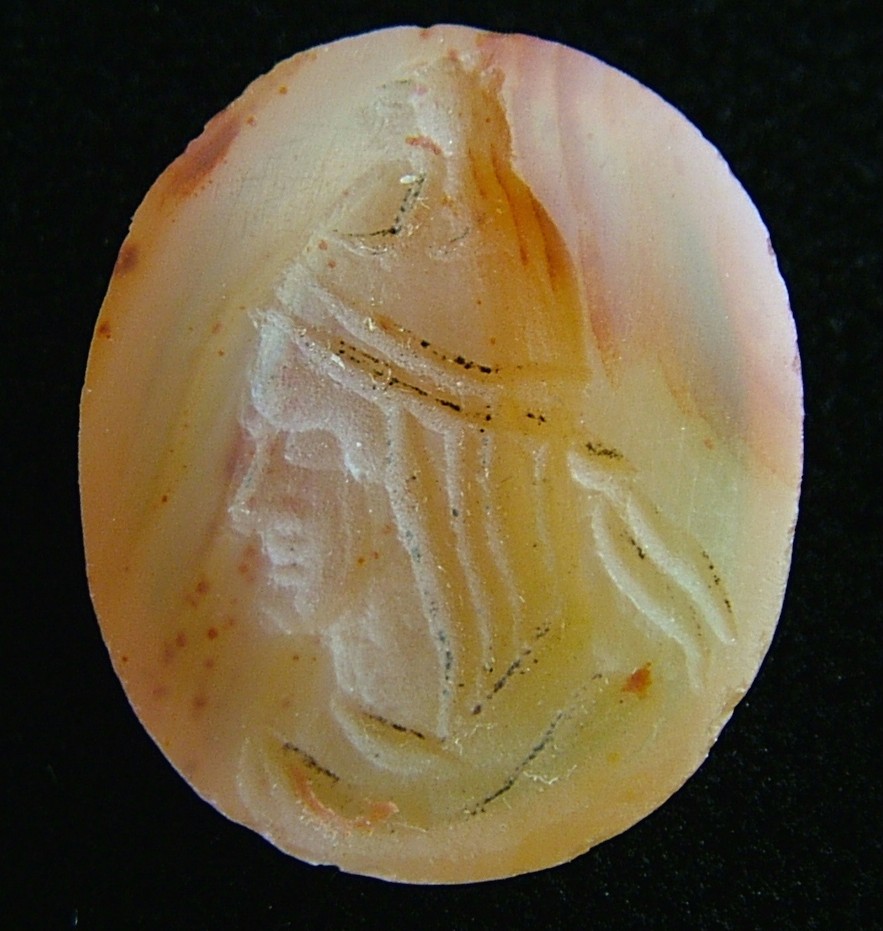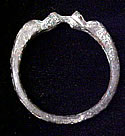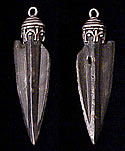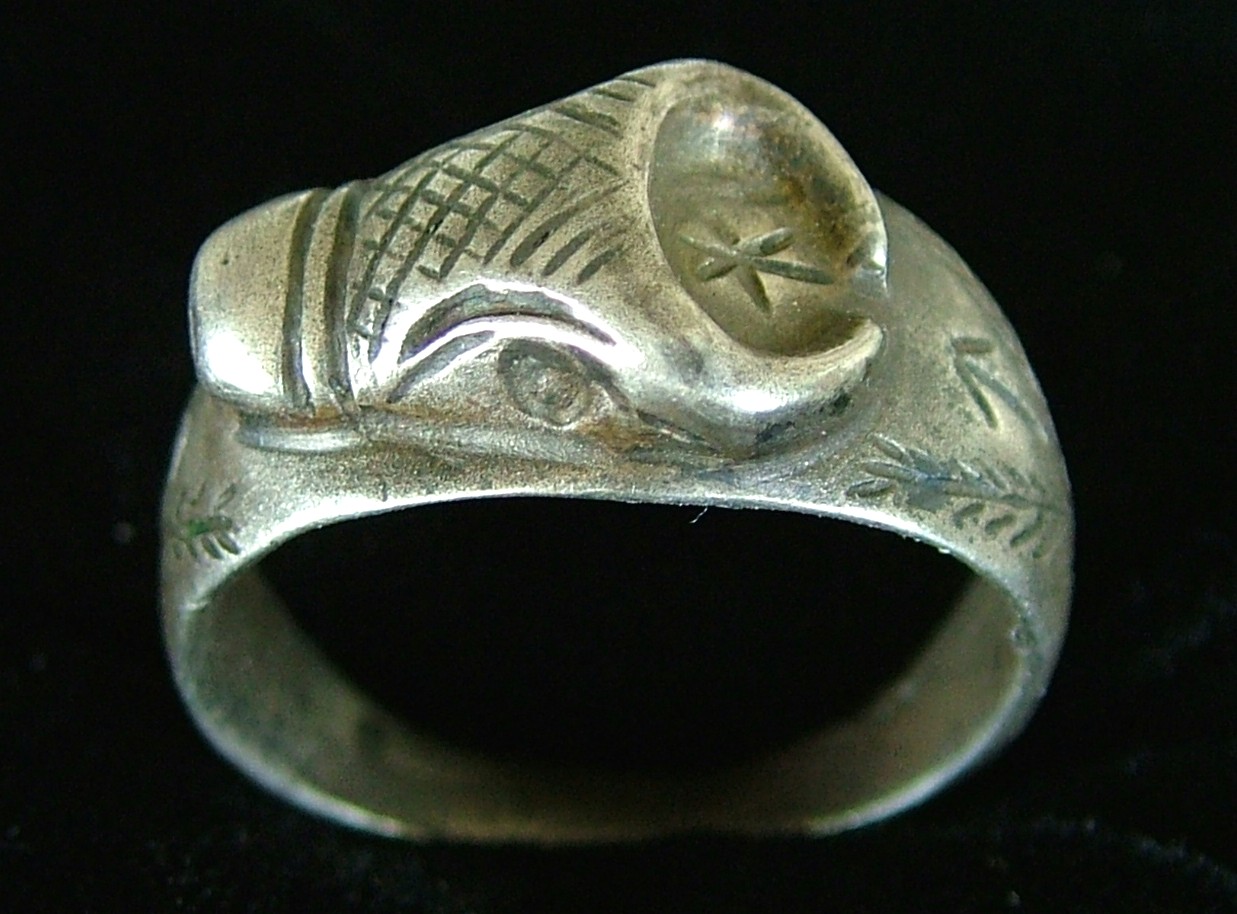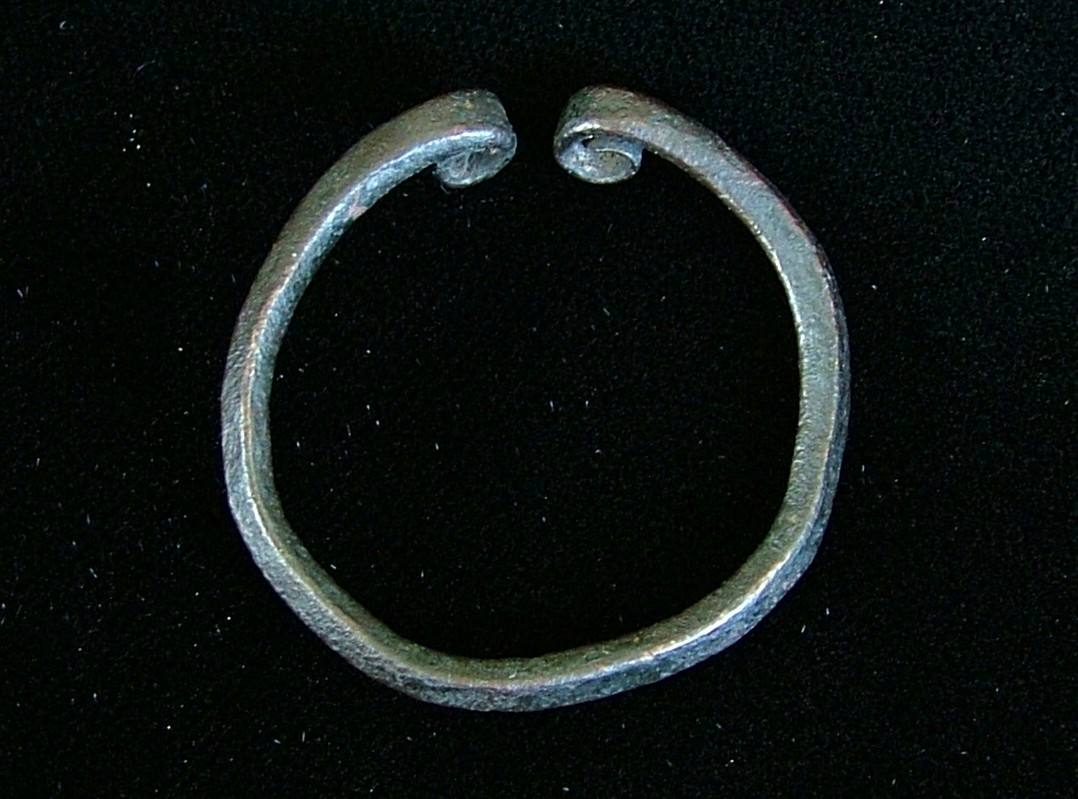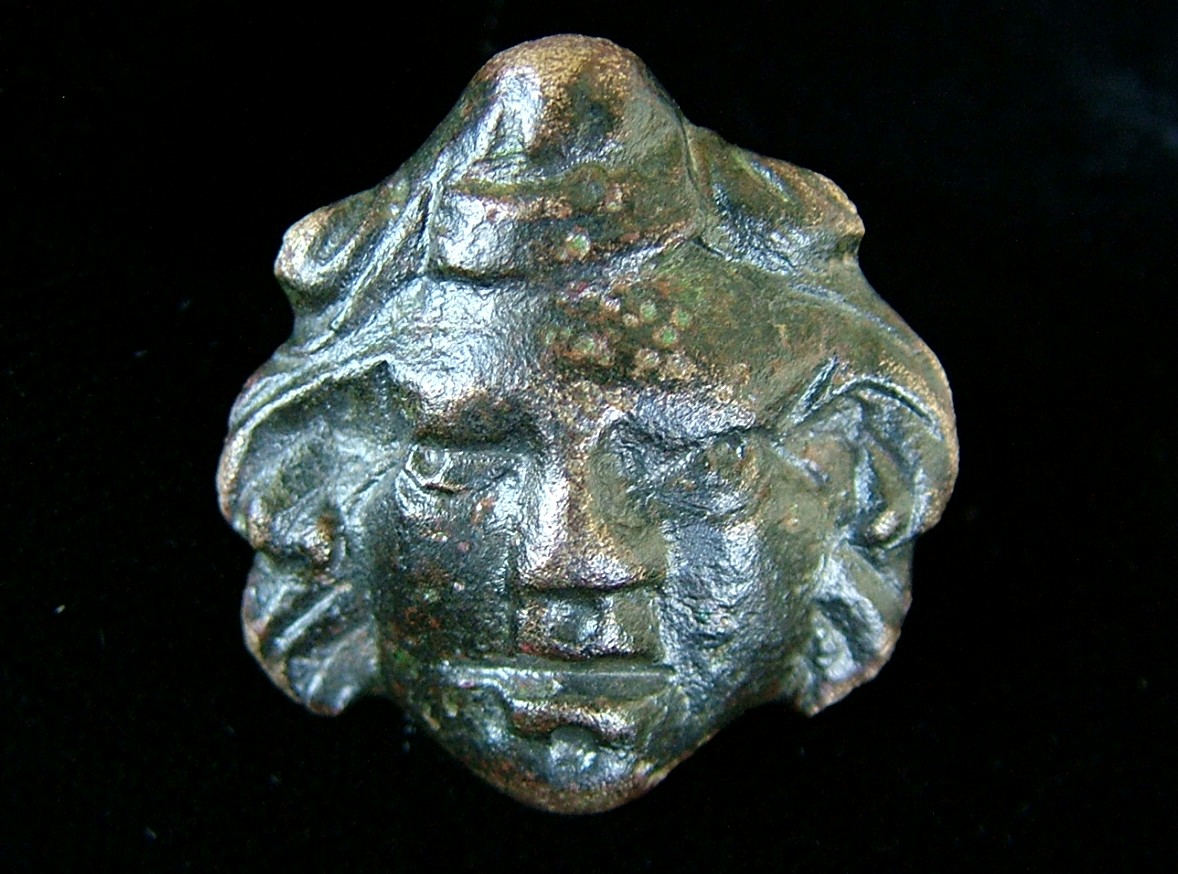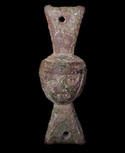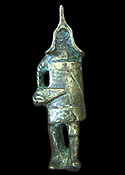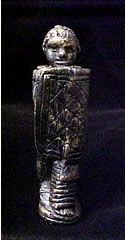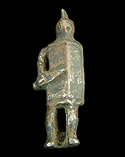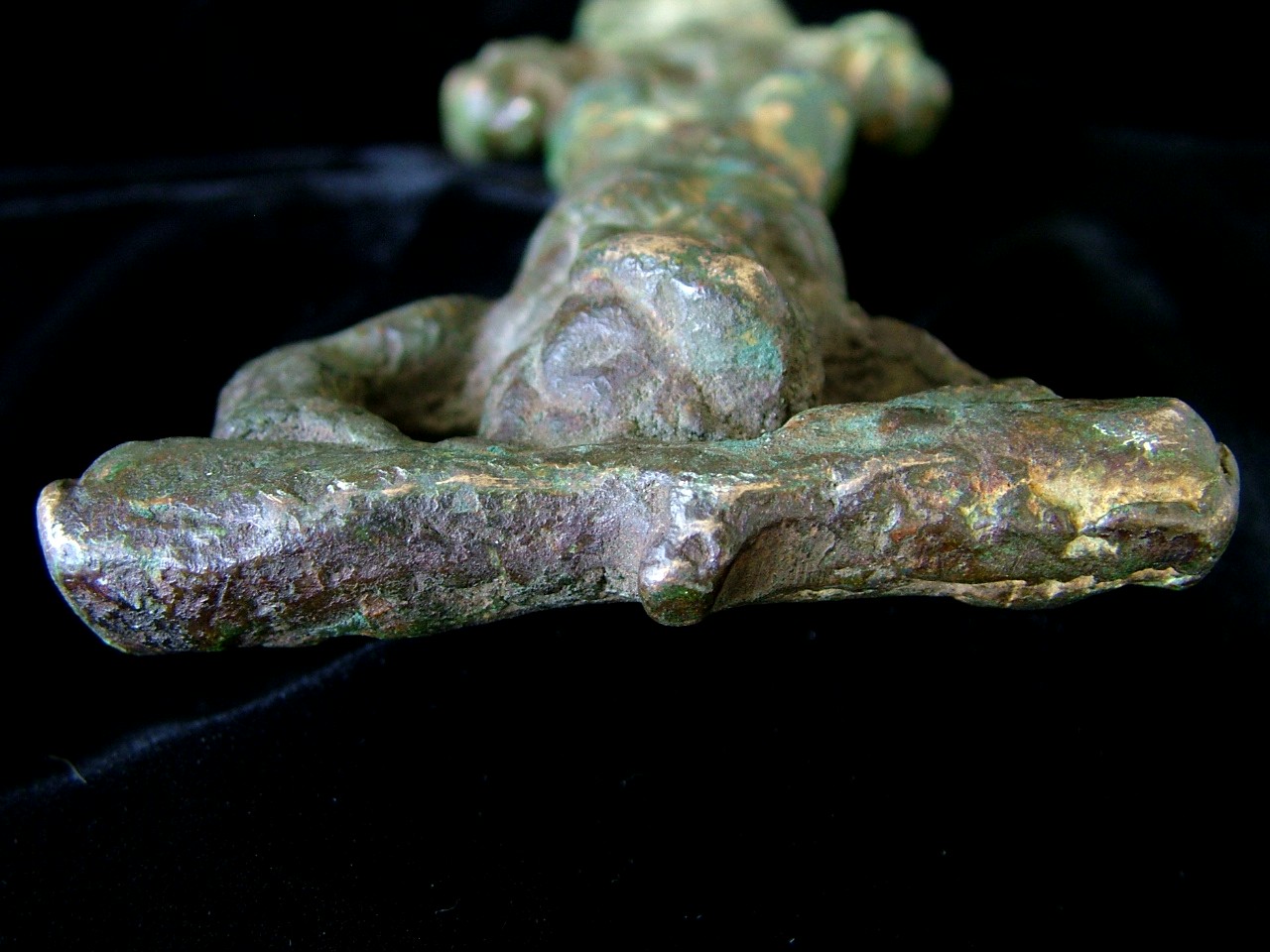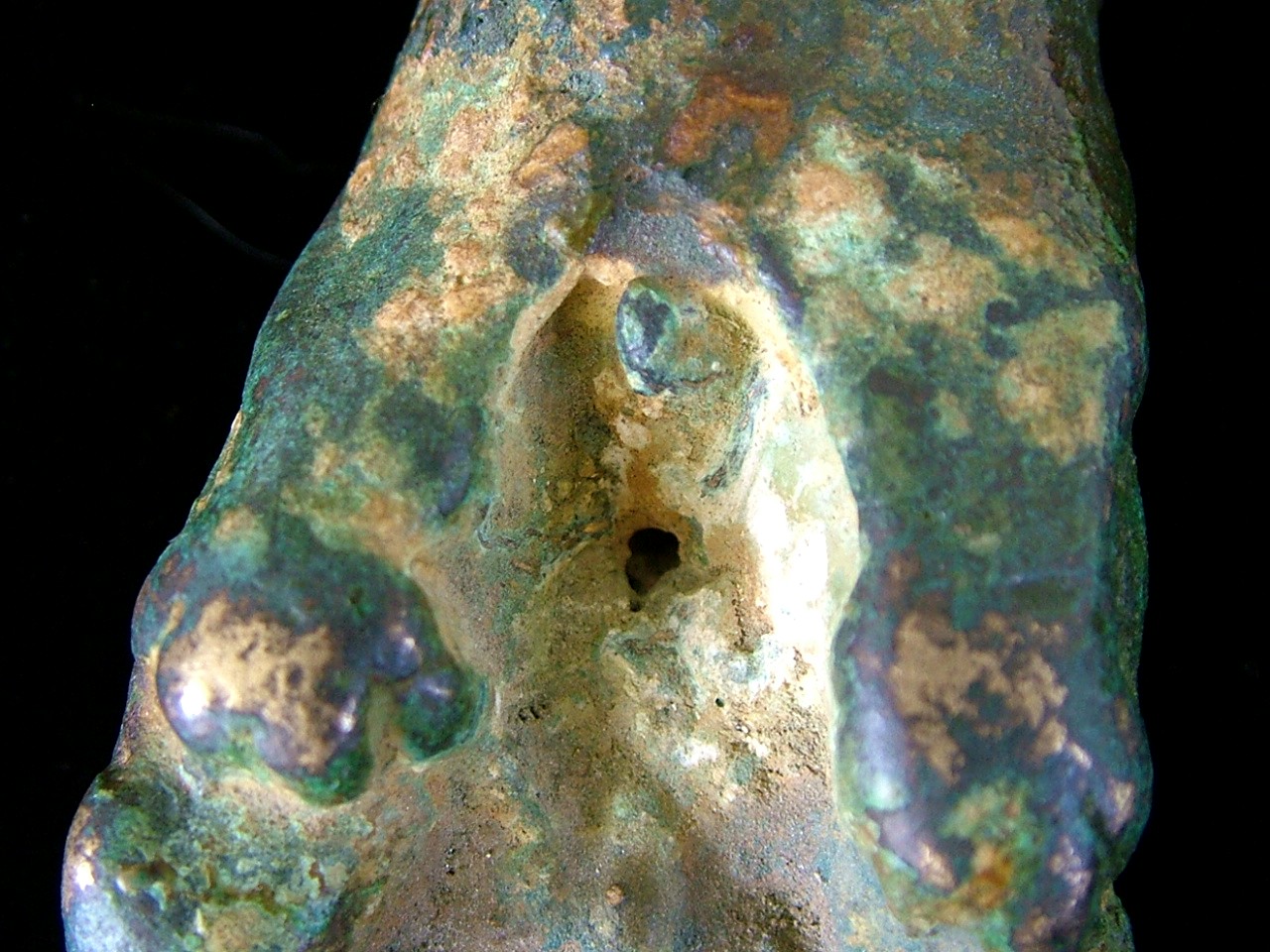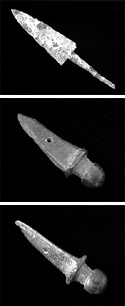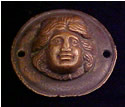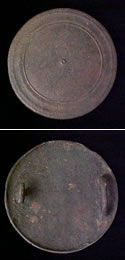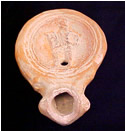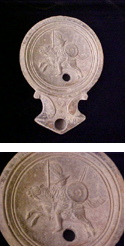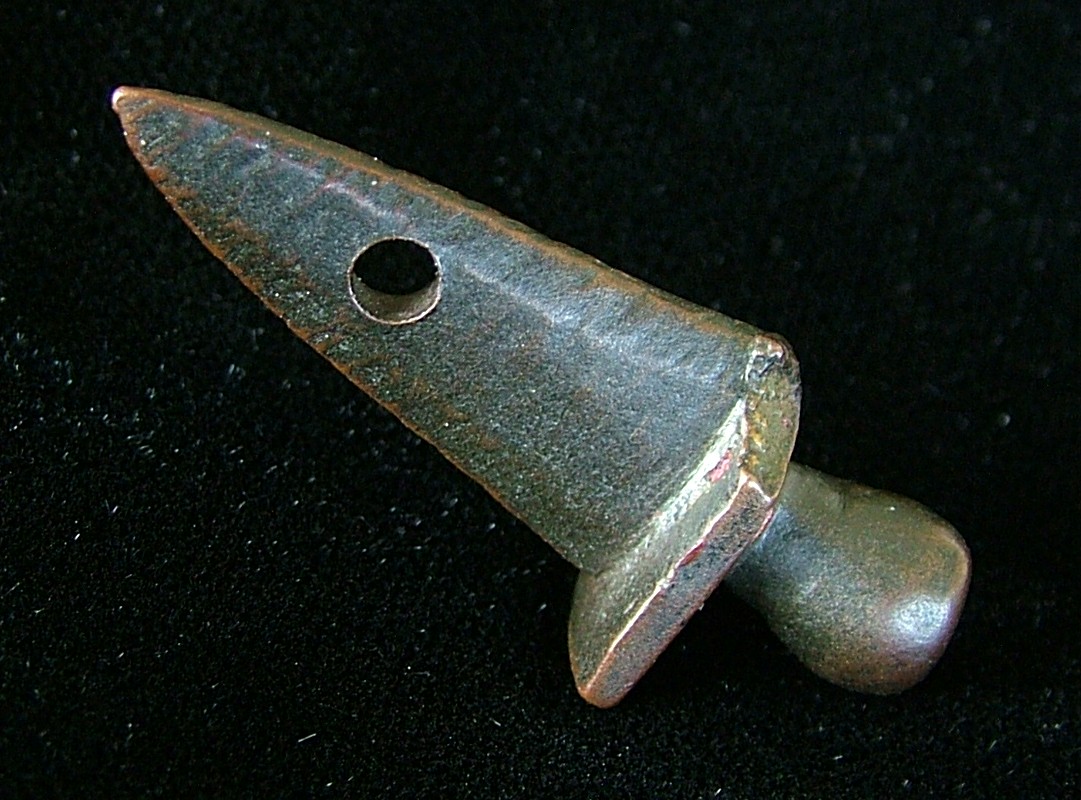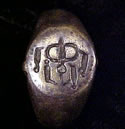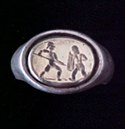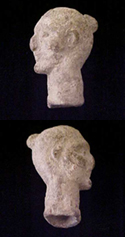 |
|---|
| MARBLE ICON DEPICTING THE ROMAN DUX LUCIUS ARTORIUS CASTUS |
|||||||||||||||||||||||||||||||||||||||||||||||||||||||||||||||||||||||||||||||||||||||||||||||||||||||||||||||||||||||||||||||||||||||||||||||||||||||||||||||||||||||||||||||||||||||||||||||||||||||||||||||||||||||||||||||||||||||||||||||||||||||||||||||||||||||||||||||||||||||||||||||||||||||||||||||||||||||||||||||||||||||||||||||||||||||||||||||||||||||||||||||||||||||||||||||||||||||||||||||||||||||||||||||||||||||||||||||||||||||||||||||||||||||||||||||||||||||||||||||||||||||||||||||||||||||||||||||||||||||||||||||||||||||||||||||||||||||||||||||||||||||||||||||||||||||||||||||||||||||||||||||||||||||||||||||||||||||||||||||||||||||||||||||||||||||||||||||||||||||||||||||||||||||||||||||||
| Material: Gray Marble The pictures with this artifact have a focus on a micro piece of silver metal (it is 1 mm in length), it may be a relic. To the scientific mind the belief in relics is mere primitive superstition and it is dismissed as such. To the believer, relics (either real or supposed) are viewed as anchors of the past that provide faith in the present and future. Apparently jewelers and other artisans whenever possible or by commission would incorporate relics or bits of relics with miniature or micro art in their creations. Research of miniature art on artifacts shows that weapons makers, artists (sculptures and painters), and jewelers were the keepers and recorders of the history and, or beliefs of a people; furthermore miniature art on prehistoric artifacts show that this practice is extremely ancient. According to my observations, miniature art still continues among some traditional jewelers and a few metal smiths (apparently usually with little or no knowledge of this on the part of the client), but it appears to have disappeared with sculptures and painters; it may be last seen with the older European artists of the 1950's. In 2007 a major museum in the U.S. announced the finding of miniature art on a painting done by a master artist, it is considered to be an important discovery. There are certain artifacts that may contain relics that are listed on this website and on kingarthurbanner.com. The micro metal piece on this Marble Icon of Lucius Artorius Castus may represent a piece of a: standard, helmet or armor. According to new research on the "Saxon Ring Of Arthur As The Scythian Navigator, Thunderer, and War god", it appears that there are at least a few symbols that represent the Soma of the Indo Europeans. As soon as information with the "Saxon Ring" is updated, speculations concerning this proposed relic will be posted. Copyright 2008 David Xavier Kenney An image of this artifact is published with permission in the Athena book King Arthur: Tra storia e leggenda. Da Cimitile a Camelot, by Mario de Matteis and Antonio Trinchese. Currently this image is be included in an superb upcoming educational DVD. This image has also been in many numerous newspapers and magazines. |
|||||||||||||||||||||||||||||||||||||||||||||||||||||||||||||||||||||||||||||||||||||||||||||||||||||||||||||||||||||||||||||||||||||||||||||||||||||||||||||||||||||||||||||||||||||||||||||||||||||||||||||||||||||||||||||||||||||||||||||||||||||||||||||||||||||||||||||||||||||||||||||||||||||||||||||||||||||||||||||||||||||||||||||||||||||||||||||||||||||||||||||||||||||||||||||||||||||||||||||||||||||||||||||||||||||||||||||||||||||||||||||||||||||||||||||||||||||||||||||||||||||||||||||||||||||||||||||||||||||||||||||||||||||||||||||||||||||||||||||||||||||||||||||||||||||||||||||||||||||||||||||||||||||||||||||||||||||||||||||||||||||||||||||||||||||||||||||||||||||||||||||||||||||||||||||||||
PRAEFECTUS ALAE (CAVARLY WING COMMANDER) OR PRAEFECTUS ALAE MILLIARI (CAVALRY WING OF A THOUSAND COMMANDER) ATTIC HELMET
|
|||||||||||||||||||||||||||||||||||||||||||||||||||||||||||||||||||||||||||||||||||||||||||||||||||||||||||||||||||||||||||||||||||||||||||||||||||||||||||||||||||||||||||||||||||||||||||||||||||||||||||||||||||||||||||||||||||||||||||||||||||||||||||||||||||||||||||||||||||||||||||||||||||||||||||||||||||||||||||||||||||||||||||||||||||||||||||||||||||||||||||||||||||||||||||||||||||||||||||||||||||||||||||||||||||||||||||||||||||||||||||||||||||||||||||||||||||||||||||||||||||||||||||||||||||||||||||||||||||||||||||||||||||||||||||||||||||||||||||||||||||||||||||||||||||||||||||||||||||||||||||||||||||||||||||||||||||||||||||||||||||||||||||||||||||||||||||||||||||||||||||||||||||||||||||||||||
| Material: Bronze and Copper (With Traces Of Gold Gilding, Silver Gilding, Lead, and Niello) |
|||||||||||||||||||||||||||||||||||||||||||||||||||||||||||||||||||||||||||||||||||||||||||||||||||||||||||||||||||||||||||||||||||||||||||||||||||||||||||||||||||||||||||||||||||||||||||||||||||||||||||||||||||||||||||||||||||||||||||||||||||||||||||||||||||||||||||||||||||||||||||||||||||||||||||||||||||||||||||||||||||||||||||||||||||||||||||||||||||||||||||||||||||||||||||||||||||||||||||||||||||||||||||||||||||||||||||||||||||||||||||||||||||||||||||||||||||||||||||||||||||||||||||||||||||||||||||||||||||||||||||||||||||||||||||||||||||||||||||||||||||||||||||||||||||||||||||||||||||||||||||||||||||||||||||||||||||||||||||||||||||||||||||||||||||||||||||||||||||||||||||||||||||||||||||||||||
|
| |
A "FLYING FLYNN" ROMAN BRONZE MARS QUIRINUS (WAR ROMULUS) AND BELLONA (AS THE CHARIOT) STATUE |
Material: Bronze (With Traces Of Gold and Silver Gilding) To my knowledge there are three other known examples of this statue. Two of the others are smaller, have less detail, and are not capable of tipping forward in the flying position. A third example was recently brought to my attention, it is in an old Swedish collection and was found "in the sea of Naples", this should mean the Bay of Naples or thereabouts, it was obtained prior to 1914 from the well known art and antiquities dealer/consultant Ludwig Pollak. The statue is exact as this example, but the engravings on the chariot are different and it is missing the javelin, it also understandably has a thicker patina. After extensive research I wrote a paper on the statue seen here a few years ago. Among many other things I had at the time speculated that it may have been made at a Roman foundry in Neopolis (modern Naples), and that due to the technique that the foundry may have mass produced, I am now convinced of this. Although this type of statue was of Mar's in the City of Rome itself, they may have been made exclusively in Campania, it is of a type of Mars as Mars Quirinus (Mars Romulus) that had just as much to do with fertility and agriculture as war, another words it is the earliest form of Mars, but combined with Quirinus (Romulus deified). It also gives the answer to the Mars winged phallus pendants that were so popular with the Romans, they represent this type of Mars as the ram of spring, the seeding of the earth, and the opening of the campaign season. Interestingly reproductions of such pendants are still produced in Naples and are (or once were) popular with visiting sailors as curios, the pendants are (or once were) nicknamed the "Flying Flynn'" (the name is another story) by British sailors, so at least this statue of this statue type is now named. The large face on the chariot's front may be the closest to ever seeing an image of Mar's consort (or sister) the war goddess Bellona (there are no known images of Bellona from antiquity), it is made so that when it is viewed from different positions it will change from a beautiful woman's face to a wavy hideous face. Unlike Mars who is the ideal of war, Bellona is a changing force of nature and the reality of war.
|
| |
PRAEFECTUS CLASSIS (FLEET COMMANDER) ATTIC HELMET |
Material: Bronze ROMAN LEGIONARY NAVAL WATER COMPASS CUP, AKA "THE HERCULE'S CUP" (Archived)
|
|
|
ROMAN LEGIONARY COOLUS TYPE C HELMET CHEEK PIECE BELONGING TO A HELMET OF A LEGIONARY OF LEGION XVII CLASSICA (NAVAL) VICTRIX, AN ARTIFACT OF THE TEUTOBURG FOREST (OR VARUS) DISASTER OF 9 AD.
|
Material:
Bronze, Lead Overlay, and Fossilized Leather Until recently the identity of the 17th Legion at the Teutoburg has been unknown (as well as that of the 18th and 19th legions). With that said, the art and inscriptions on two of the rivets on this cheek piece specifically identify the 17th Legion at the Teutoburg as the 17th Classica Victrix. |
|
VARUS AVENGER STATUETTE 1
|
(Archived) |
|
VARUS AVENGER STATUETTE 2 |
(Archived) |
|
CRASSUS AVENGER STATUETTE
|
(Archived) |
| |
ROMAN CAVALRY PARADE/SPORTS HELMET MASK |
Material: Bronze
|
| |
ROMAN MUSCLE CUIRASS
ARMOR PIECE WITH NEMESIS CHEST TONDO |
Material: Bronze Miniature art and inscriptions have been found on all three of the existing rivets, althoiugh the photographing of these is a bit of a challenge. This is mainly due to a shellac coating that was used to preserve the artifact in the mid 20th C. Nevertheless we expect to have at least a few pictures posted soon.
| ROMAN CAVALRY OFFICER'S GOLD GILDED BRONZE SCALE ARMOR PIECE |
|
Material: Gold Gilded Bronze |
|
|
ROMAN GOLD STLYUS CAP AS A
GLADIUS POMMEL/TANG CAP, ATTRIBUTED AS AN ARTIFACT OF THE TEUTOBURG FOREST DISASTER |
Material: Gold This is a gold cap for a stylus that is made to appear as a gladius pommel/tang cap, it is 17 mm in length. It has miniature depictions and inscriptions. Unfortunately prior to it becoming a part of this collection, it had been scrubbed. It has traces of fossilized wax. It appears to have once had a hard wax filling and a metal tang. Although it may have been mounted on a wood or metal stylus, it is very likely that it was on an ivory or bone stylus. There are seven miniature roundels, on top of these are decorative motifs, there are twelve of these. There are also seven roundels that may be symbolic of seven Germanic tribes or six tribes and Rome. Together these make a total of nineteen decorative motifs, it may hint that there is a connection to Legion XIX. There is one roundel that has the Roman letters "VAR" inscribed on it (seen in Pictures 2 and 3), this will change to other letters when moved (Picture 4), it is an abbreviation for the Roman General Publius Quinctilius Varus of the Teutoburg Forest disaster in 9 AD. The focus is on the roundel next to it (seen in Pictures 5 thru 11), as it is of the Germanic rebel and Roman traitor Arminius and his tribe the Cherusci. A stylized depiction of a helmeted clean shaven Arminius can be seen with Picture 11, on the helmet there are the bind letters "MAR" (the Roman war god Mars) that can also be seen as "ARM" (Arminius), with the indented center there is a cup that holds three figures .
|
|
|
ROMAN SENATORIAL GOLD BAND RING |
Material: Gold
The ring is an American size 9 3/4. There were two classes of Romans who wore "The Gold Band", those of the Senatorial class (the Nobles) and those of the Equestrian class (the Roman Knights or lesser Nobles). Picture 1 shows the ring itself. There are two areas on one side of the ring's edge that have engravings seen with the followig pictures. Picture 2 shows an animal's head, it may be a horse or a deer's head. There are figures behind this that may symbolize the hunting of that animal. Pictures 3 and 4 show small figures and the letters "M' and "R". Pictures 5 and 6 show a man's face in an Roman Attic helmet. On the helmet's crest there are several stacked figures, the bottom figure is in a balcony that is also the helmet's visor. Under the face there are the Roman letters "ARO", this should be a Roman reference to ploughing. Therefore the symbolism must be of Romulus and his ploughing of a square (in order to found Rome). The figures overhead may be either ancestors, semi-divine, or celestial figures. Picture 7 shows a boy in a conical hat, this should be a Penates or Lares. The following depictions and inscriptions are not seen with the pictures provided. Although somewhat worn, it has miniature art on the inside, with this there are Roman letters and one large Etruscan or Oscan figure eight letter (thought to be for the Roman letter "F"). This figure eight letter is also made as a bear drinking from a cup, when slightly turned the bear will change into a wolf. In the bottom loop there s a boy's face. Next to this are Roman bind letters. The letters appear to be an abbreviation for the "Aventine". When turned slightly the letters will change and appear as an abbreviation for the Palatine. When seen upside down, it is a boy holding a crested bird (wood pecker). When seen from one side, it is two semi-coiled serpents. Finely when seen from the other side, it is a serpentine man with an unknown serpentine animal. It is evident that the two boy figures are Romulus and Remus and that the two serpents are symbolic of the Aventine and Palatine hills. There are other depictions and inscriptions, one of the inscriptions is the "S C" (Senatus Consulto) of the Roman Senate. In legend the Roman Senate originated as a councilor group to Romulus. Copyright 2008 David Xavier Kenney Revised Nov 08 |
|
|
ANATOLIAN (TROJAN?)
TANGED JAVELIN HEAD WITH ROMAN COS II STAMP |
Material: Copper Alloy The javelin head is sharp, due to this and other factors it suggests that it had been considered an artifact during the Roman Era. It may even have been though of as a relic, then stamped COS II, and then given as a presentation or gift. It has a thin silver/lead alloy over-coating, this has miniature art and inscriptions. At some point in the near future these will be examined. It is expected that they will provide an exact identification for this artifact. |
|
|
ROMAN HIGH RANKING OFFICER'S PARAZONIUM (ELITE DAGGER OR SHORT SWORD) |
Material: Iron, Bronze, Silver (With traces of gold gilding), and fossilized Wood. An Early 2nd C. AD Knife with an Eagle-Headed Hilt was discovered by Archeologist and collector Marcel Julsing. It may be of a type that had been a weapon of status that was worn by a Parazonium owner. The hilt is bronze (this may have once been gold gilded) with an iron blade, it is 23.5 cm in total length and shows some of the same design themes and iconography as the Parazonium sword (or long dagger) just viewed. The knife though small in size shows that it is functional and would have also had utility for a soldier in the field. The hilt bears a remarkable resemblance to a Parazonium tucked into an aristocrat's torso sash, worn by a Roman Officer portrayed on Trajan's column. The grip and guard are in the shape of a Corinthian column. A portion of both the grip and pommel appear as a type of plant shoot (a fennel shoot?) with an eagle's head facing forward. The blade's shape could suggest an eagle's talon. The overall shape of the knife gives the impression that it may represent a streaking meteor or comet. It appears that this knife has much of the same meaning as the Parazonium, the blade is either of meteorite iron or contains at least some meteorite iron. From pictures of the Parazonium, Marcel speculates that this knife and the Parazonium may have been found together, or in the same general vicinity. To my knowledge this is the only known example. To view this Parazonium hilted knife Click here. Archeologist and collector Marcel Julsing of the Netherlands specializes in Carolingian Era research and artifacts. He has an extensive Medieval collection and a collection of rarities of various eras. If you would like to contact Marcel he can be emailed at: narimaan@hetnet.nl or bodemvondsten@hetnet.nl |
|
|
ROMAN NAVAL COMMEMORATIVE PARAZONIUM OF VESPASIAN AT GAMALA |
Material: Iron, Silver / Lead Alloy, Bronze, Ivory, Paint, Lacquer, and Paste |
|
|
ROMAN OFFICER'S EATING KNIFE WITH PARAZONIUM HILT |
Material: Bronze (One trace of gold gilding) and Iron The overall length of the Eating Knife is 23 cm, the blade near the hilt has remnants of four square teeth. The Eating Knife has miniature engravings and inscriptions including a Triton with standards, the inscriptions appear to be of Legion XV Apollinaris. Copyright 2007 David Xavier Kenney. |
|
|
ROMAN STAFF OR GUARD OFFICER'S GLADIUS HISPANIESIS (SPANISH SWORD) OF THE PROCONSUL (GOVENOR) OF AFRICA |
Material: Iron and Bronze The pommel tang cap and grip are made of ivory, both have eleaborate engravings. |
|
|
POMPEII GLADIUS OF A TRECENARIUS (CHIEF CENTURION) OF LEGION II TRAIANA FORTIS |
Material: Iron, Silver/Lead Alloy, Bronze, and Ivory Inscriptions (TRECEN) on the top of the pommel's stud show that this sword had belonged to a Trecenarius of Legion II Traiana Fortis. Although it is well established that the Praetorian Trecenarius had been the top Centurion, the position of the Legionary Trecenarius has not been established. There is one theory that the rank was second to the Praefectus Castrorum. Part of the inscription (II TR GER) suggests that this sword had been commissioned when Legion II Traiana had been awarded the title Germanica, most likely in 213 with the defeat of the Alamanni (although the fighting actually ended with a treaty, the Romans considered it a victory) or shortly thereafter. The inside of the stud has inscriptions and symbols of the defeated Germanic tribes. The idea of the defeated being thrown into a hole can be seen with various artifacts on this website. The iconography on the pommel highly suggests that the sword has meteorite metal. Under the green patina, the guard is black with work done in white overlay. The blade has engravings and decorations, most notably is a sword with a dragon grip and lighting (that is in fact chromium) coming from the sword's tip. The blade appears to have been treated with a tinted black chromium or with an alloy with chromium, hence the Class I to II condition that deems it as the finest example of a gladius known. |
|
|
ROMAN TRIBUNE'S PARASPATHA (PARAZONIUM/LONG SWORD) AND CHAPE |
Material: Iron, Bronze, and Ivory. Fossilized Leather and Fossilized Wood. As seen in the Anness book "The Illustrated Encyclopedia of Swords and Sabres" by Harvey J. Withers
|
|
|
ROMAN LEGIONARY MAINZ GLADIUS |
Material: Iron, Bronze, and Fossilized Bone |
|
|
ROMAN BOY'S GLADIUS,
ATTRIBUTED TO A ROMAN OFFICER'S SON |
Material: Iron and Bronze |
|
|
ROMAN SARMATIAN CAVALRY SPATHA BONE HANDLE SEGMENT MEMORIAL PIECE
|
Material: Bone |
|
|
ROMAN GLADIUS SHEATH MOUNT STRIP DEPICTING THE DEATH OF CLEOPATRA |
Material: Bronze |
|
|
ROMAN OFFICER'S
VICTORY COMMEMORATIVE CHAPE FOR A POMPEII GLADIUS |
Material: Tinned Bronze
Era: 1st Century (Most likely 67 to 77 AD) Culture: Roman
Style: Roman Origin: From an English Dealer via a French collection, purported to have been found in the Middle East, possibly Palestine or the Holy Land. Miniature inscriptions and iconography on this gladius chape suggests that it had been awarded to a Centurion of Legion V Macedonia for leading a Cohort in a first contact on Lake Tiberius (aka Lake Gennesaret or The Sea of Galilee) in September of 67 AD. At some point in the near future we will post pictures of the miniature work.
|
|
|
ROMAN OFFICER'S PUGIO (Dagger) |
Material:
Iron and Bronze (With Traces of Silver Gilding) |
|
|
ROMAN LEGIONARY PUGIO (Dagger) |
Material:
Iron, Traces of Bronze, and Fossilized Wood |
|
|
ROMAN CONTOS HEAD (THE "ARTHUR LANCE") |
Material:
Iron As seen as a Roman Contos in the Anness book "The Illustrated Encyclopedia of Swords and Sabres" by Harvey J. Withers |
|
|
ROMAN LEGIONARY
OR AUXILIARY SHIELD BOSS Material: Bronze Speculation is that this shield boss may have belonged to a Legionary of Legion II Adiutrix |
|
|
ROMAN EQUITES SINGULARES AUGUSTI PRAYER / OATH ICON OF TITUS
Material: Lead and Paint |
|
|
ROMAN PRAYER ICON OF VESPASIAN ARCTOS (Archived) |
|
|
SARMATIAN WAR CHIEFTAIN'S AQUILA (EAGLE STANDARD) PENDANT TROPHY OF LEGION XXI RAPAX
Material: Bronze with Traces of Thin Lead Overlay and One Trace of Gold Gilding
| |
|
Title
Pictures are provided of the inside of the trophy, pictures of the outside will be provided at a later date. This is the head of the Aquila of Legion XXI Rapax, it was captured and then made into trophy pendant for the Sarmatian Chieftain that had destroyed that legion in 92 AD, it is also a writing tool (a type of stylus). It is identified and categorized by miniature inscriptions and art, some of these on the inside have tints and minute amounts of resin paint. The art on the inside shows some of what happened to the Rapax and any prisoners, it also shows much of the Sarmatian belief system. Some of the art on the thin lead overlay on the outside is distinctly different then the art on the lead on the inside. The inside and around the edges of the three openings had been reworked by another artesian, due to the technique and art style the artesian appears to have been of a Germanic Roman background. It is made of bronze that had once been gold gilded. It's dimensions are 7 cm x 4 1/2 cm; it weighs 5.7 ounces. A fair amount of lead was added to the inside top as to weight the trophy pendant, the lead makes up for approx. 1/3rd to 1/2 of the total weight of the piece. Considering that the Aquila's truck (finial stand) had been made of thin gilded copper (or thin gilded bronze) plates, then the weight of the Aquila and truck may have been somewhere between 0.9 to 1.4 kilos (2 to 3 pounds). There at least a few similarities with the miniature art and it's symbolism (almost 1900 years latter) with a Nap II Eagle from the Franco-Prussian War in 1871. It is a German Cavalry Brigade's trophy of a French Infantry Regimental Eagle. To view this Amazing TrophyClick here |
|
|
ROMAN LEGIONARY AQUILA (EAGLE) STATUE Material: Silvered Bronze (With Two Faint Traces of Gold Gilding) |
|
|
ROMAN RYANUS (DIETY OF LEGIONARY STANDARDS) STATUE |
Material:
Bronze |
|
|
ROMAN LEGIONARY
INDIVIDUAL PRAYER STATUE SET OF AQUILA (EAGLE STANDARD) AND THE
THRACO DACIAN GODDESS BENDIS, OR A GOD ASSOCIATED WITH BENDIS |
Material:
Bronze |
|
|
LEGIONARY GLADIUS PENDANT (Archived)
|
|
|
ROMAN CAVALRY SPATHA PENDANT (Archived)
|
|
|
ROMAN RING OF VULCAN, MAKER OF JUPITAR'S THUNDER AND LIGHTNING BOLTS |
Material:
Bronze (With Traces Of Gold Gilding) |
|
|
ROMAN MARINE
STANDARD LANCE HEAD |
Material:
Iron |
|
|
ROMAN LEGIONARY,
MARINE, AND CAVALRY STANDARD SPEAR HEADS |
Material: Iron |
|
|
ROMAN CAVALRY
AUXILIARY STANDARD QUARTER MOON Material: Bronze Era: 1st or 2nd Century AD Culture: Roman Provincial Style: Roman Origin: An Antiquities Dealer from NY |
|
|
ROMAN SICAMBRIAN FRANK AUXILLARY BEE STANDARD FINIAL Material: Bronze, Lead Overlay, Paint, and Electrum |
|
PRAYER ICON OF A ROMAN SICAMBRIAN FRANK NAVAL AUXILIARY |
(Archived)
| ROMAN LEGIONARY TORC (TORQUE) AWARD Material: Silver With Gold Wash
Era: Late 2nd to Early 3rd Century AD Culture: Roman Provincial Style: Roman Origin: An Antiquities Dealer in the Netherlands |
|
|
HASTA PURA AWARD TOP Material: Silver |
|
|
ROMAN LEGIONARY
(OR AUXILIARY) AND SARMATIAN AUXILIARY CAVALRY MINIATURE STANDARD
AWARDS |
Material: Bronze
|
|
|
ROMAN LEGIONARY
(OR AUXILIARY) MINIATURE STANDARD SPEAR HEADS |
Material:
Iron
Era: 2nd/3rd Century AD Culture: Roman and Roman Provincial Style: Roman and Roman Provincial Origin: An Antiquities Dealer from Germany and an Antiquities Dealer from California. |
|
|
ROMAN THRACIAN
AUXILIARY STANDARD BROOCHES Material: Bronze Era: 2nd Century AD Culture: Roman Provincial Style: Roman Origin: An Antiquities Dealer from New York and Germany |
|
ROMAN CELTIC AUXILIARY
STANDARD BROOCHES (Depicting a Celtic Solar or Fire Alter and a
Celtic Shield) Material: Bronze
|
|
|
ROMAN FLEET BROOCH
AND LEGIONARY BROOCH Material: Bronze Era: 2nd to 3rd Century AD Culture: Roman Provincial Style: Roman Origin: An Antiquities Dealer in England |
|
|
ROMAN CAVALRY
HORSE'S HARNESS OPEN WORK DISC JUNCTION Material: Silvered
Bronze Era: 2nd to 3rd Century AD Culture: Roman Style: Roman Provincial Origin: A Dealer from England and Found Along Hadrian's Wall With Other Roman Cavalry Artifacts. |
|
|
ROMAN CAVALRY
HORSE'S HARNESS OPEN WORK DISC JUNCTION, WITH ANCHORS AND LEATHERBACK
TURTLES Material: Bronze Era: 2nd to 3rd Century AD Culture: Roman Style: Roman Provincial Origin: An Antiquities Dealer from NJ |
|
|
ROMAN CELTIC OR
CELTIC CAVALRY HORSE'S HARNESS OPEN WORK DISC JUNCTION, WITH STORKS
(POSSIBLY REPRESENTING THE EGYPTIAN GOD THOTH) Material: Bronze
with Iron residue Era: 2nd to 3rd Century AD Culture: Roman Provincial Style: Roman Provincial Origin: An Antiquities Dealer from Illinois
|
|
|
ROMAN CAVALRY
HORSE'S HARNESS GROUP; PLATE DISC JUNCTION, ROSETTE HEART APPLIQUE,
AND FLORAL/ACORN APPLIQUE Material: Bronze
and Silvered Bronze Era: 2nd Century AD Culture: Roman Style: Roman Origin: A Dealer from Germany |
|
|
ROMAN CAVALRY CENTURIONES EXERCITATORES (CAVALRY TRAINING CENTURION) WHIP POMMEL |
Material:
Bronze Era: 1st to 2nd Century AD Culture: Roman Style: Roman Origin: An Antiquities Dealer from California |
|
|
ROMAN NAVAL CENTURIO CLASSICUS (MARINE CENTURION) EAGLE HEAD WHIP POMMEL
|
Material:
Bronze and Lead
|
|
|
ROMAN STATUETTE
OF A PRAETORIAN GUARDSMAN Material: Bronze BACK TO: ROMAN AMAZON, VENUS SOUTH BEACH CLICK HERE
|
|
|
MINIATURE STATUE
BUST OF MARC ANTONY Material: Bronze Era: Second Half of the 1st Century BC Culture: Roman Provincial Style: Roman Origin: An Antiquities Dealer in England
|
|
|
MINIATURE STATUE
BUST OF VERCINGETORIX Material: Bronze
|
|
|
ROMAN PRAETORIAN
NEMESIS HELMET FRONT APPLIQUE Material: Bronze Era: 2nd Century AD Culture: Roman Style: Roman Origin: An Antiquities Dealer in California |
|
|
ROMAN PRAETORIAN OFFICER'S PARADE DRESS ARMOR
NEMESIS CHEST TONDO
Material: Bronze Era: Late 2nd to 3rd Century AD Culture: Roman Provincial Style: Roman Provincial Origin: From an Antiquities Dealer in New York * This muscle cuirass chest tondo had been crafted as to fit comfortably on the solarplex of the armor. The art appears to be of the Eastern Roman Provinces. |
|
|
ROMAN PRAETORIAN
OFFICER'S PARADE DRESS ARMOR APPLIQUE (FOR A LEATHER PTERUGES) |
Material:
Bronze Era: 2nd Century AD Culture: Roman Style: Roman Origin: From a Dealer in Nevada |
|
|
ROMAN PRAETORIAN
GUARDSMAN'S GLADIUS POMMEL TOP Material: Bronze
Era: 2nd to 3rd Century AD Culture: Roman Style: Roman Origin: From a Dealer in Nevada |
|
|
ROMAN LEGIONARY WHISTLE Material: Bronze
|
|
|
ROMAN LAMP
SHARD SHOWING A CANIS PUGNAX (WAR DOG) Material: Terracotta
|
|
|
ROMAN LEGIONARY
CANIS PUGNAX SHIELD TAG Material: Silvered Bronze
|
|
|
ROMAN CANIS PUGNAX
(WAR DOG WAR DOG) MEDAL FROM A CAVALRY HORSE'S HEART PHALERAE (MEDAL)
ON AN UNBROKEN CHAIN |
Material:
Bronze Era: 2nd or 3rd Century AD Culture: Roman Style: Roman Origin: An Antiquities Dealer from California |
|
|
ROMAN CAVALRY
ATTACHABLE HORSE'S HEART PHALERAE (MEDAL) AND HORSE'S HEART PENDANT Material: Bronze/Silvered
Bronze Era: 2nd to 3rd Century AD Culture: Roman Style: Roman Origin: From a Dealer in California and from a Dealer/Collector in England |
|
|
ROMAN LEGIONARY
OR GERMAN AUXILIARY SHIELD BROACH |
Material: Bronze and Enamel
|
|
|
ROMAN THRACIAN
AXE, VIPER, AND SHIP BROOCH COMMEMORATING THE SHIPS OF ACHILLES
OR BATTLE OF ACTIUM |
Material: Silvered Bronze
|
|
|
ROMAN STATUE OF CLAUDIUS BRITANNICUS Material: Bronze, Gold Gilt, Silver Gilt, Lead, and Paint with Lacquers The statue has miniature art. Some of this has to do with the followin; the Roman invasion of Britain in 43 AD, Vespasian, a comet, and local legends of the Silures. When our archive is completed it will include more detailed information and pictures. When this statue was in the previous collection it was identified as a representation and legionary votive of Hercules, along with the current identification this may also be so, in fact it appears that it may be a specific type of Hercules associated with Britannia, this concept will be explored at a later date. |
|
|
ROMAN AMETHYST
AND CITRINE (SARDONYX) IMPERIAL TYPE (EMP. CLAUDIUS) CAMEO Material: Amethyst
and Citrine Era: 1st Century AD Culture: Roman Style: Roman Origin: An Antiquities Dealer in Lebanon |
|
|
ROMAN CAMEO RING
OF EMPEROR OCTAVIUS AUGUSTUS ENGRAVED WITH ANNI FELIC (HAPPY YEARS)
Material: Silver
and Onyx
Era: Early 1st Century AD Culture: Roman Style: Roman Origin: An Antiquities Dealer in Germany |
|
|
PRAETORIAN GUARDSMAN'S RING COMMEMORATING THE SIEGE / BATTLE OF JERUSALEM OF THE 1ST REVOLT
|
Material:
Silver Alloy, Carnelian, and Trace Amounts of Niello Era: 71 AD Culture: Roman Style: Roman Origin: An Antiquities Dealer in New York This is a silver alloy and carnelian Roman intaglio ring that most likely belonged to a Praetorian Guardsman. The ring is an American size 11. Our archive is still under construction; once completed it will include detailed information and pictures of this artifact. The ring appears to be initialed by the intaglio maker; this will be researched at a later date. On the ring's band is art that commemorates the Siege / Battle of Jerusalem of the 1st Revolt; it is made in a scratch and dotted graffiti style. There are various inscriptions, two of these are abbreviations of the Praetorian Guard (P PR) and Legion XV Apollinaris (LEG XV AP). The art and technique on the intaglio is highly sophisticated. It was done with various levels of very refined miniature work and a gold wash. Much of the miniature art on the face and helmet has to do with rituals to the god Sol Indiges. Most of the miniature work is not displayed with the pictures that are provided here. The ring appears to have a small amount of damage to its bezel and intaglio. Upon close inspection it shows that this is not so, and that it was purposely made this way. The figure on the bezel is not a Praetorian as such, but is the figure of a god whom the Praetorians evidently worshiped, Quirinius (this Romulus deified by having been given the identity of the Sabine war god Quirinius) , but it is also of Titus (perhaps as a Praetorian Prefect, a General, or as Emperor). The spear has engravings and inscriptions around it. There is a ship that may also be seen as a sheath of a grain; on this are the letters "SOL" and Etruscan letters. Above this area is a figure who may be the god SOL. The inscription is similar to that which appears on the lance head of the "Roman Bronze Mars Quirinius (War Romulus) and Bellona Statue" that is included with this collection. Due to this there are hints that Mars Quirinus had a solar cult of a death; a night journey, and a return. The spear or lance would represent a ray of the sun (a symbol of perseverance). The following are speculated to be primary symbols of a proposed Roman Praetorian (and possibly a Roman Officer) state cult; a Roman Attic Helmet (Quirinus / Mars), a cup (Sol Indiges), a spear or javelin (Sol Indiges), an agrial flagellum (Quirinus / Mars as a fertility figure), and a cloak (Sol Indiges). Secondary symbols may be a certain type of fibula and a muscle cuirass armor*. Interestingly the bezel has an engraved scorpion tail which also forms a whip/flagellum around the intaglio. The scorpion was a primary symbol of the Praetorians, and is speculated to be symbolic of Tiberius's birth sign (Scorpio). However, considering this new information, this may or may not be so. The scorpion whip/flagellum when turned slightly will change into an Ouroboros (serpent biting it's tail). When moved slightly the Ouroboros's head can also be seen as a bird's head with an open beak and the tail as a sword fish (the bird's open beak is swallowing the swordfish's bill). The bird's beak and sword fish's bill may be of an unknown mythology of the wood pecker's tough beak (with the Omphalos as the wood pecker's opening to it's nest). The wood pecker was sacred to the Romans as the bird of Mars. The Omphalos's head is situated near the small opening on the ring that will be discussed shortly, it has the following on it: A wolf biting a bear on the forehead, the bear has a fish body. Two figures in front of a stepped pyramid with a box on top and a disc over it. With this is an inscription that reads "A R I S" (the letters are also very small figures), under this in smaller letters is "C O S", then under this there is a large letter "L" (it is directly over the disc). When tuned to another position it shows the head of a water serpent, this can also be seen as two human bee figures. When turned again this will change into an Omphalos (naval stone), when turned slightly it will change into a head wearing a mitre. When turned once more it will change into a swan or duck's head (this may symbolize the Trojan Royal House), inside the swan's head there are two figures in a fish, overhead there are the letters "M S I L O". It should be mentioned that an Omphalos with wings is also seen on the statue previously mentioned, it is located on the back of the floor of the chariot . Among many other things, there are miniature iconography/inscriptions on the inside of the bezel under the intaglio, some of which can be viewed from a small opening between the bezel and intaglio (this is the area that at first glance appears to be gouged out by damage, but is actual intentionally formed as such). In a certain position this small opening will appear as if illuminated, which is caused by the light penetrating the carnelian and being reflected by the bright metal. There are various small figures that will change when moved, and there is an inscription that reads "Q M R" (Quirinus Mars Romulus). This inscription is similar to the one seen on the inside of the chariot of the statue that was previously mentioned. To the right of this there are several figures that transform into a large face, there are also hints of a helmet; under this area are the letters "R O M" (Romulus). All this should suggest that there was a cave type shrine dedicated to Quirinus Mars and Sol Indiges on the Quirinal Hill. This may or may not be in line with the recent findings of Archeologist Andrea Carandini of Rome University. Either way, the new information associated with this ring suggests that besides the fact that there was a state cult of Quirinus (Mars Quirinus), there was also a Praetorian (and most likely Roman Officer) cult. Under the bezel on the inside of the ring there is a long building column / capital with engraved figures, it also has long engraved figures on either side, one of these is woman in a headdress (Rhea Silvia) holding a sitting boy in a pilus hat, the boy has one wing that is shaped like a wolf's head (this wing / wolf's head is also as a mount for a female rider, perhaps the goddess Diana), when slightly turned the boy's head changes into two faces that are looking backward (Romulus and Remus). Over this is a scene with the god Mars (identified due a horned helmet and the letter "M") seducing the woman in the headdress, behind Mars there are two boy's or young men's faces (Romulus and Remus). When the ring is turned upside down it shows other figures. This column is also a tree trunk; on it there is a lightning bolt, a javelin or pilum, two men's faces in profile with a third as a semi-fish head. The faces are intertwined with; a bear's head, a wolf's head, and a cow or bull's head. Below this is a fat bearded man with breasts(most likely Vulcan). All these together, including the boy in a pilus hat make for a large woman's head and bust in profile, she is wearing a helmet (or helmet type headdress) with a fish head, this may represent a mystery goddess of the Vulcanalia festival that was held on 23 August, during this festival fish and small animals were thrown into a fire. Due to the great fire of 64 AD an alter to Vulcan was put on the Quirinal Hill, it is thought that this was by order of Emperor Domitian. It appears that this represents a column / tree trunk that was central to an older belief and ritual, it's location on this ring suggests that it was hidden under a cave shrine, it may have been from an ancient temple**. Due to the possible importance of these new findings, there will be at least some research and additional photographs taken, which will be posted as soon as possible.. * Some of these symbols appear in later Christian iconography, there may or may not have been a connection, either way they suggest that the Praetorians (and possibly all Roman Officers) identified with a state cult of Rome's founder (Romulus) as the god Quirinus with his god father (Mars) regenerating with the assistance of Sol Indiges. This may have to do with; the winter solstice, fertility, the spring equinox, agriculture, and war. Some of this may also be associated with the story of the Trojan Prince Aeneas and the founding of the Roman race. If all this is so, then the cult of Quirinus may very well be the secret of Rome's long existence. ** The column / tree trunk area has a layer of fossilized charcoal soot mixed with a resin, it is part of the art technique. This is only known due to the same with scratched art on a Nordic stone age knife. Why this type of art medium is on this area of the ring is not known. It could be speculated that this charcoal had been used in a special offering. although there may be more exact answers with the miniature art. So far there are hints that this may be connected to the Vulcanalia, and perhaps even to the great fire of 64 AD. If so then the primary message of the iconography is truly one of Roman regeneration. Copyright 2008 David Xavier Kenney Revised Nov 08
| |
|
Title
|
Information
| |
|
Title
|
Information
| |
|
Title
|
Information |
|
|
PRAETORIAN
GUARDSMAN'S RING |
Material:
Silver and Carnelian Era: Late 3rd Century AD Culture: Roman Style: Roman Origin: An Antiquities Dealer in the Netherlands |
|
|
PRAETORIAN
GUARDSMAN'S RING |
Material:
Silver and Carnelian Era: 276 AD Culture: Roman Style: Roman Origin: An Antiquities Dealer in the Netherlands
|
|
|
ROMAN PRAETORIAN
LIONESS INTAGLIO SIGNIFIER'S RING Material: Bronze
and Carnelian Era: Intaglio, 1st to 2nd Century AD - Ring, 3rd Century AD Culture: Roman Style: Roman - Roman Provincial Origin: An Antiquities Dealer from New Jersey |
|
|
ROMAN WOMAN'S OR CHILD'S FAN RING OF THE PRAETORIAN GUARD Material: Bronze
and Carnelian Era: 3rd Century AD Culture: Roman Provincial Style: Roman Provincial Origin: An Antiquities Dealer from New Jersey |
|
|
ROMAN LEGIONARY RING OF I ITALICA |
Material:
Silver and Mercury Alloy Era: Late 1st to 2nd Century AD Culture: Roman Style: Roman Origin: An Antiquities Dealer In Germany. From an Old German Collection |
|
|
ROMAN LEGIONARY
RING OF THE CASTRUM (CAMP) OF II ITALICA Material: Bronze |
|
|
ROMAN LEGIONARY RING OF THE II ADIUTRIX |
Material:
Bronze Era: 2nd Century AD Culture: Roman Provincial Style: Roman Origin: An Antiquities Dealer in New Jersey |
|
|
ROMAN LEGIONARY SCUTUM (SHIELD) RING OF THE II ADIUTRIX COMMEMORATING THE BATTLE OF HATRA IN 117 AD
Material: Tin, Gold Plate Gilding, and Niello Era: 117 AD Culture: Roman Provincial Style: Roman Provincial Origin: An Antiquities Dealer in Florida |
|
|
ROMAN LEGIONARY
RING OF THE II TRAIANA FORTIS (TRAJAN'S STRONG) ENGRAVED WITH VIVA
TRAIANA FS AND PALM |
Material:
Silver Era: 2nd Century AD Culture: Roman Style: Roman Origin: An Antiquities Dealer in Germany |
|
|
ROMAN LEGIONARY
RING OF THE V ALAUDAE (LARKS) Material: Silver Era: 1st Century AD Culture: Roman Provincial Style: Roman Origin: An Antiquities Dealer in Germany The ring's bezel shows an elephant and an uncovered legionary in the elephant's front quarters, this may be a representation of this legion's Aquilifier (Eagle bearer). Overhead are two stars (Dioscouri) and a bird. The bird should be an eagle but it appears to be more similar to a lark. The bezel is flanked on the band by engravings of elephant tusks. The V Alaudae had been the only Roman legion to have the elephant as it's official emblem, this distinction had been earned by successfully engaging a war elephant charge in their first action. The V Alaudae was also the first legion to have been recruited from foreigners (Gauls) outside of Italy (Raised and financed by Julius Caesar). In essence the V Alaudae was the world's first foreign legion, the fact that these legionaries were from ancient Gaul (Modern France) is a rather interesting coincidence. Copyright 2005 David Xavier Kenney |
|
|
ROMAN LEGIONARY RING OF THE V MACEDONIA Material: Silver and Jasper Era: 2nd to 3rd Century AD Culture: Roman Provincial Style: Roman Origin: An Antiquities Dealer in the Netherlands |
|
|
ROMAN LEGIONARY RING OF THE VI FERRATA |
Material:
Silver and Lead Alloy Era: 89 AD to 96 AD Culture: Roman Provincial Style: Roman Provincial Origin: An Antiquities Dealer from Germany, From an Old German Collection |
|
|
ROMAN LEGIONARY RING OF THE VI FERRATA Material: Silver and Mercury Alloy Gilded On Bronze with Traces Of Lead Inlay
Era: 89 AD to 96 AD Culture: Roman Provincial Style: Roman Origin: An Antiquities Dealer in New Jersey |
|
|
ROMAN LEGIONARY RING OF THE VI VICTRIX COMMEMORATING SERVICE ALONG HADRIAN'S WALL AND THE DUX LUCIUS ARTORIUS CASTUS'S ARMORICAN EXEPEDITION Material: Silver and Mercury Alloy
Era: Second Half of the 2nd Century AD to C. 210 AD Culture: Roman Provincial Style: Roman Origin: An Antiquities Dealer in Germany, from an Old German Collection, found in England |
|
|
ROMAN LEGIONARY RING OF THE VII CLAUDIA Material: Silver and Onyx |
|
|
ROMAN LEGIONARY RING OF THE IX HISPANIA AS THE IX BRITANNIA Material: Bronze
|
|
|
THE ICONOGRAPHY ON THIS RING IS CURRENTLY BEING RE-EXAMINED AS POSSIBLY OF AN EQUITES LEGIONIS
Material: Bronze Info. |
|
|
ROMAN LEGIONARY RING OF THE X FRETENSIS (FROM THE X EQUESTRIS)
Material: Silver |
|
|
ROMAN LEGIONARY
RING OF THE XI CLAUDIA Material: Silver
and Carnelian The eagle is flanked by two saluting signifier standards. One of the eagle's wing's has a heart shaped ribbon or laurel. This suggests that the XI Claudia may have had an entire Cavalry Ala (Wing of 500 Cavalrymen) permanently attached to it, that is at the time the ring was made. |
|
|
ROMAN LEGIONARY
RING OF THE XI CLAUDIA Material: Silver
and Jasper Era: 2nd to 3rd Century AD Culture: Roman Provincial Style: Roman Origin: An Antiquities Dealer in California |
|
|
ROMAN WOMAN'S OR CHILD'S RING OF LEGION XI CLAUDIA Material: Bronze and Carnelian Era: 2nd to 3rd Century AD Culture: Roman Provincial Style: Roman Origin: An Antiquities Dealer in the Netherlands |
|
|
ROMAN LEGIONARY
RING OF THE XII FULMINATA (THE THUNDERING LEGION) COMMEMORATING THE BATTLE FOR SELECIA IN 164 AD Material: Silver Era: 164 AD Culture: Roman Provincial Style: Roman Origin: An Antiquities Dealer in Germany |
|
|
ROMAN LEGIONARY RING OF THE XVI GALLICA (OF THE GAULS) AS AMPHIBIOUS LEGIONARIES
Material: Silver and Lead Alloy Era: Late 1st C. BC to 70 AD Culture: Roman Provincial Style: Roman Origin: An Antiquities Dealer in Germany |
|
|
ROMAN LEGIONARY
RING OF THE XXI RAPAX Material: Silver
Era: Mid 1st Century AD to 92 AD Culture: Roman Style: Roman Origin: An Antiquities Dealer in Germany |
|
|
ROMAN LEGIONARY
RING OF THE XXII DEIOTARIANA Material: Silver Era: 1st to Early 2nd Century AD Culture: Roman Provincial Style: Roman and Roman Provincial Origin: An Antiquities Dealer in Germany |
|
|
ROMAN LEGIONARY RING OF LEGION XXX CLASSICA PRIMA MARTIA Material: Silver Era:Circa 50 to 42 BC Culture: Roman Style: Roman Origin: An Antiquities Dealer in Germany |
|
|
ROMAN LEGIONARY
RING OF THE XXX ULPIA TRAIANA VICTRIX, ENGRAVED WITH XXX ON A LEGIONARY
BRICK Material: Silver Era: 3rd Century AD Culture: Roman Provincial Style: Roman Origin: An Antiquities Dealer in Germany |
|
|
ROMAN CAVALRY RING OF THE ALA II FLAVIA PIA FIDELIS MILLIARIA (WING OF THE SECOND FLAVIAN LOYAL AND FAITHFUL OF A THOUSAND)
Material: Silver Era: 2nd Century AD Culture: Roman Provincial Style: Roman Origin: An Antiquities Dealer in Germany |
|
|
GERMANIC RING COMMEMORATING ARMINUIS AND THE CAPTURE OF THE EAGLE OF THE LEGION XIX AND THE DEFEAT OF VARUS'S LEGIONS AT THE TEUTOBURG FOREST Material: Silver and Lead Alloy Era: C. 9 AD Culture: Germanic Style: Roman Provincial Origin: An Antiquities Dealer in Germany |
|
|
LION OF JUDAH DAVIDIC SHIELD RING OF THE SICARII OF THE 1ST REBELLION Material: Bronze
Era: 70 to 73 AD Culture: Judaic Sect Style: Roman Provincial Origin: An Antiquities Dealer in New Jersey |
|
|
DACIAN CAMEO RING OF THE DACIAN KING BUREBISTA AND DECEBALUS Material: Bronze and Lead Era: C. 117 AD Culture: Roman Provincial Style: Greek Origin: An Antiquities Dealer in the Netherlands, purported to have originated from the Balkans |
|
|
ROMAN CHRISTIAN SECT RING OF PANTHERA Material: Silver and Carnelian Era: Early to Mid 2nd C. AD Culture: Roman Christian Sect Style: Roman Provincial Origin: An Antiquities Dealer in the Netherlands |
|
|
ROMAN INTAGLIO OF KING RUA OF THE HUNS Material: Carnelian Era: 5th Century AD Culture: Roman Provincial Style: Roman Origin: An Antiquities Dealer In England Information to follow soon. |
|
|
|
Material:
Bronze Era: 2nd Century AD Culture: Roman Provincial Style: Roman Origin: An Antiquities Dealer In Illinois, purportedly from Eastern Europe |
|
|
ROMAN SARMATIAN KNIGHT'S ARTHURIAN PENDANT Material: Silver
and Bronze Era: 2nd to 4th Century AD Culture: Roman Provincial Style: Roman Provincial Origin: An Antiquities Dealer in California |
|
|
ROMAN RING OF THE MAKING OF THE SWORD OF MARS Material: Silver and Silver / Mercury Alloy Era: 3nd to 4th Century AD Culture: Roman Provincial Style: Roman Provincial Origin: An Antiquities Dealer in Germany, from an Old German Collection |
|
|
ROMAN SARMATIAN NAVIGATOR NOSE RING OF ALA I SARMATARUM Material: Bronze Era: Late 2nd Century AD Culture: Roman Provincial Style: Roman Provincial Origin: An Antiquities Dealer in England |
|
|
ROMAN APPLIQUE OF APOLLO AS A NORTHERN GERMANIC OR SARMATIAN TRIBESMAN Material: Bronze Era: 2nd Century AD Culture: Roman Provincial Style: Roman Provincial Origin: An Antiquities Dealer in California |
|
|
ROMAN LEGIONARY
BELT APPLIQUE WITH A HELMETED SARMATIAN FACE Material: Bronze Era: 3rd to 4th C. AD Culture: Roman Provincial Style: Roman Origin: From an Antiquities Dealer in California This is a typical Late Roman Legionary Propeller Belt Applique. What is unique about this applique is that it depicts the helmeted head of a Late Roman Era Sarmatian. The art style is known as Roman grotesque, which is usually associated with entertainment, not with Roman soldiers. The crudeness of the subject does not appear to be a result of poor craftsmanship, as the excellent detail shown on the scale chin straps suggest a fairly skilled artist. One eye is placed lower than the other and the face has a distinct, animal like snout. The artist may have portrayed his subject like this as Sarmatians were associated with the dragon. Or it could be that the craftsman/artist had been commissioned to purposely create a homely face. Tacitus wrote in his Germania that he viewed the Sarmatians as having a physically repulsive appearance. To date there is no evidence to verify such a statement or not, but there are a few theories. |
|
ROMAN BROOCH OF A MURMILLO GLADIATOR Material: Bronze (With Traces of Silver), Copper, and Niello Era: 2nd to 3rd C. AD Culture: Roman Provincial Style: Roman Origin: An Antiquities Dealer in Macedonia This brooch may validate my theory that some Roman gladiator colleges had a belief in resurrection, at the very least it shows that some fans (most likely female) believed that; at least one Murmillo (fish man) gladiator had been resurrected, or that the Murmillo gladiator was connected to the concept of resurrection, or all gladiators were connected to such a concept (or any combination of those, or all of those). Inside the Murmillo helmet near the top there appears to be a large mustached figure (possibly with one eye), this may be a Gallic or Germanic sea god, the Murmillo was also known as the "Gaul", the reason for this is unexplained. The triangular sword has inscriptions on it, the larger Roman letters appear to spell "SIAR" or SIARS, it may be the Gallo / Celtic word "Siar" that means "West", this may be a reference to a western Gallic tribe, or? If the sword is viewed from the side with the tip downward, it will appear as a triangular face with a pilum (imperial Roman military javelin) head for an ear, he is wearing a turban (from the hand guard padding of the gladiator, the turban being a reference to Middle Eastern Christians?)), the central part of the face appears as a chalice. The top of the turban (the pommel) also appears as a hawk or an eagle head. While in this position, to the lower left (on the shield) there is a stout bearded figure with a large nose wearing a hood. The shield has a large line design that is the shape of a stylized eagle or hawk head. The diagonal line of this is also a type of long thin herm (it has a head on top), to the top front of this line there is a black woman (in niello) with an oval piece of copper. The horizontal bottom line has an eagle's head (in the other position this is the bearded hooded figure) that appears as if biting a tail. This is a type of "eagle or hawk headed ouroboros" (a Greek word meaning tail swallower that is usually a serpent or a snake), it is a very ancient universal symbol of resurrection, if the bird is a hawk then this suggests Horus, the Egyptian god of resurrection . Under this line to the right as an idol type large breasted woman (viewed from the left she appears as if veiled). If the brooch is put on it's other side the head of the eagle (that is also the bearded hooded figure) will turn into a short man (with a ball on his head) holding a chalice, next to him is a taller figure that appears to be a woman, in front of this taller figure is the letter M on top of a V. There are depictions of various figures on the legs and on the back of the brooch. . The black woman (in niello) on the shield is reminiscent of the Greek black figure pottery (popular C. 700 to 530 BC), she should be the goddess Aphrodite, but as her Roman equivalent Venus, the copper and the dolphin suggests that she is specifically of the Isle of Cyprus, the dolphin may in fact be a stylized outline of that island (from a northern perspective). The woman on the bottom appears as an ancient matronly priestess or goddess (a priestess of the goddess Juno?), she appears as if commanding the diagonal herm. On both sides in back there are copper inserts in bronze pin swivel bar holders. The copper insert on the right (in back of the gladiator's left foot) appears to be connected to the figures on the right side of the shield. This shows two long women as if kissing that are near and on a bowl (one figure is on the bowl), the bowl is actually the pin's swivel bar. In front of this scene is a large triangle with the point down, this has a face of a man in profile (as if viewing the scene on the bowl. The lines on top and below this the copper insert show what appear to be crosses on top and figures on the bottom. Behind this (on silvered bronze) is another triangle but with the point up. From a slightly side angle the scene on the pin's swivel bar shows a dark haired woman (with a large earring?) as if kissing a small girl with hood or a hair net, the lines on top and below this on the copper insert are now somewhat more defined, they show what appears to be a ritual (or a parade, or a battle?), on top there is a rectangle face (but as or on a shield?), spears, oval shields, and crosses. This scene may be of gladiator ritual, or a Gallo / Celtic or Germanic ritual, although it is doubtful there is a connection, the cross would later become a Christian symbol. The engraving on the pin swivel bar on the other side shows a helmeted or crowned figure holding either a palm, a sword. or a staff, this may be a victorious gladiator. The depictions seen on this brooch appears to be of various cultures of the provinces of the Roman Empire, it also appears that these were cultures that believed in the concept of resurrection of the dead. Private Collection David Xavier Kenney Copyright 2007 David Xavier Kenney Revised July 07 |
|
ROMAN STATUETTE
OF A SECUTOR GLADIATOR Material: Bronze
|
|
|
ROMAN BROOCH OF A SECUTOR GLADIATOR Material: Lead Alloy Note the similarity of the Short Gladius or Pugio seen on this brooch and the actual weapon seen (after the next two artifacts listed) with our ROMAN SECUTOR OR MURMILLO GLADIATOR SHORT GLADIUS (Sword) OR PUGIO (Dagger). |
|
|
ROMAN SECUTOR GLADIATOR CEREMONIAL GLADIUS OF COMMODUS AS HERCULES OF THE NORTH Material: Brass, Lead Overlay, and Traces of Gold Gilding This sword is a highlighted artifact on Part 2, Disc 4, 24: "Emperors as Performers" of The Teaching Company's Course: "Experiencing Rome: A Visual Exploration of Antiquity's Greatest Empire". It is of Commodus as Hercules of the North (either Septubus, Arctos, or both), other titles may have been Hercules of the Midnight Sun, Hercules Lapis (lodestone), Hercules Orbis (Hercules of the World), or Hercules Navalis (Hercules of the Seas and, or Oceans). His overhead club may represent a piece of driftwood, suggesting Hercules as the first sailor, if so then may also be a Scythian (and later Sarmatian) connection to this (if this interest you go to the "Saxon Ring Of Arthur As The Scythian Navigator, Thunderer, and War god" on www.kingarthurbanner.com. This may be why there is a slight curve with the hilt, is so then the feet are planted as the Pillars of Hercules, but the hilt is of a North Atlantic (more likely as an Isle of the North Atlantic) theme. This is a type of Hercules that I have been researching for several years, he is usually seen with a cup in his right hand. He is generally not known in typical Greek or Roman inscriptions or votives, this may be due to his association with the lode stone (Hercules Lapis) and the water compass (as Hercules's Magnetic Cup). The ancient peoples of the Mediterranean may have considered the water compass as a nautical secret. This may have been the type of Hercules that Commodus worshipped most, it may have also been the same with gladiators. Information on the "Roman Sarmatian Navigator's Nose Ring Of Ala I Sarmatarum (a Wing of Sarmatian Cavalry posted to Britannia)" and the "Roman Legionary Ring Of The VI Victrix" that are with this collection suggests that Commodus may have been interested in exploration of the North Atlantic (as the origin of magnetic north as the realm of "Hercules of the North"), there may have also been strategic reasons (with the Roman conflict with Germania) with this. There are indicators that this sword had been made for a ludi (gladiator school), familia gladiatoria (gladiator group), or a collegia gladiatoria (gladiator collegia) The sword's hilt has some lead overlay and a few traces of gold and silver gilding. New information is that this sword "may" have been used in an initiation of a mystery of Hercules and magnetic north, as it also has a theme of a Secutor gladiator gladius then it could suggest that Commodus had given that style of gladiator a hyper status. The Secutor was Commodus's favorite, he often fought in the arena as a Secutor. Pictures 26 thru 30 shows a bronze and lead overlay Thracian slide buckle for an over the shoulder sword belt, it most likely had once been gold gilded. Although it this was purchased from a dealer in the Germany, it most likely originated in the Balkans. An exact but refined depiction as this can be seen on a plate with the Rogozen Treasure in Bulgaria. In the scene Hercules is seated on a rock (with two flowers) with Apollo bowing, Hercules's left foot is on Apollo's right foot and Apollo's covered quiver (symbolizing that his solar arrows are hidden) is under Hercules. My research shows that this depiction is of Apollo bowing to Hercules of the North. This should be Hercules of the Lapis (Hercules of the Stone, or the lodestone) as Hercules of the land of the Midnight Sun. If so then it may have been the Thracians or Proto-Thracians who introduced the water compass to the Phoenicians. Certain depictions on Neolithic Nordic artifacts suggests that the water compass was known in Baltic thousands of years before it's advent in the Mediterranean (if this interest you, then go to the Ancient Miniature Art on this website). There are many indicators that the Thracians and their descendants had continuous contact with the ancient Nordics. This extraordinary Roman gladiator ceremonial
(or votive) gladius is solid caste brass using the lost wax technique.
It measures 46 1/2 cm in overall length with the statue handle
at 17 1/2 cm in length, the blade is 29 cm in length. The statue
handle is 8 cm's at it's widest width with the blade at 4 cm's
wide. It weighs approx. 2 kg. Revised June 08
| |
|
MAGNETIC HERCULES COMMODUS ARCTOS AND WATER COMPASS Information to follow soon.
| |
|
COMMODUS HERCULES ARCTOS SCORE CARD AS SECUTOR (FRONT) AND THRAX (BACK)
Information to follow soon. |
|
|
ROMAN GLADIATOR GLADIUS (Archived) |
|
|
ROMAN SECUTOR OR MURMILLO GLADIATOR SHORT GLADIUS (Sword) OR PUGIO (Dagger) AND PENDANT |
Material: Iron, Bone Residue, and Bronze The amount of fossilized bone and wood residue on the blade and tang suggest that the weapon's handle and guard had been made of bone and wood. Most likely this short gladius or pugio and pendant had been for a Secutor or Murmillo gladiator, or it is also possible that these had been made for a gladiator fan. Both artifacts were purchased at the same time from the same source. |
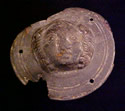
|
ROMAN GLADIATOR
HELMET MEDUSA INSIGNIA Material: Bronze/Iron
Era: 2nd to 3rd Century AD Culture: Roman Style: Roman Origin: From a Dealer in NY |
|
|
ROMAN GLADIATOR
HELMET MEDUSA INSIGNIA Material: Bronze/Iron
Era: 2nd Century AD Culture: Roman Style: Roman Origin: From a Dealer in NY |
|
|
ROMAN GLADIATOR
BELT BUCKLE Material: Bronze
|
|
|
ROMAN CONCRETE GLADIATOR AD SHINGLE Material: Concrete
Found at the Roman Amphitheater at El Jem, Tunesia in the 1930's. This Concrete (from volcanic ash and lime) Gladiator Advertisement Shingle is 18.9 cm x 14.3 cm, 17 mm thick, and weighs 0.43 Kgs (approx. 1 pound). This was a hand held advertisement for one of the following; the gladiator games, a gladiator event, or a specific gladiator match. It may also have been made for a fan. There is no doubt that the gladiator seen in the relief was a star of the arena. |
|
|
ROMAN GLADIATOR THRAX LAMP |
Material:
Terracotta Era: 1st Century AD Culture: Roman Style: Roman Red Clay Origin: From a Dealer in Belgium |
|
|
ROMAN GLADIATOR MURMILLO LAMP |
Material:
Terracotta |
|
|
ROMAN GLADIATOR
EQUITE LAMP Material: Terracotta * For More Information Concerning The Possible Significance Of This Piece Go To Important Artifacts: Click here
|
|
|
POTTERY SHARD
SHOWING GLADIATOR COMBAT SCENE Material: Terracotta
Era: 3rd Century AD Culture: Roman Style: Roman Origin: Antiquities Dealer in Illinois |
|
|
EMPEROR COMMODUS SECUTOR GLADIATOR GLADIUS PENDANT Material: Bronze With Thin Lead Overlay
Era: 2nd Century AD Culture: Roman Provincial Style: Roman Provincial Origin: Information to follow soon. |
|
|
SECUTOR GLADIATOR KNIFE PENDANT (Archived)
|
|
|
MURMILLO GLADIATOR GLADIUS PENDANT (Archived)
|
|
|
ROMAN GLADIATOR
SCORE CARD SEAL RING (This ring had most likely belonged to a Doctore, a Gladiator Instructor, it is thought that at least some Doctores were retired Gladiators) Material: Bronze
Era: 2nd Century AD Culture: Roman Style: Roman Origin: An Antiquities Dealer from New Jersey |
|
|
ROMAN LEGIONARY RING OF A GLADIATOR COMBAT OF MARCIA AND COMMODUS Material: Silver and Lead Alloy with
Electrum
Era: 193 AD Culture: Roman Style: Roman Origin: From a Dealer in Germany This ring is a highlighted artifact on Part 2, Disc 4, 24: "Emperors as Performers" of The Teaching Company's Course: "Experiencing Rome: A Visual Exploration of Antiquity's Greatest Empire". The detail art and inscriptions on this ring have been studied and researched off and on for over a year. Pictures of these will be provided soon, they have a priority. We hope to have photographs that are exact with the following descriptions. Please bear in mind that obtaining exact images of any object made with a silver and lead alloy is difficult. At least some additional pictures of this ring will be provided for at 2100 EST on 31 May 08 Due to the metal alloy of this ring not photographing well, some of the information with these images has yet to be captured on a photograph or photographs, this is particularly so with the inscriptions. We are hoping to have the desired photographs soon. In the meantime we will soon update the information as to state what can not be seen with the current images. This is a legionary ring of Legion's X Fretensis and VI Ferrata (among other things these are identified by engravings on the bottom of the ring's band) during the reign of Publius Helvius Pertinax (Dec 31st, 192 AD to March 28th 193 AD)*, or later in 193 AD (the "Year Of The Five Emperors"). The ring is made of a silver lead alloy with electrum electroplating and minute amounts of tinted metal. There are areas that have ancient miniature art that will transform, there are also three areas that show manual animation that is the most superb that I have seen to date. Whoever commissioned or made this ring knew a great deal about Lucius Aurelius Commodus Antoninus's (161 to 192 AD, aka Commodus the "Gladiator Emperor) actual mythos and the details of his death. The miniature art on this ring shows that Rome's most famous gladiator event was in fact a private affair, as the gladiatorial depiction on this ring shows that it took place at the imperial palace in Rome and ended with the assassination of Commodus. It also suggests that this may have been meant to take place (but obviously with a different outcome) in the arena of the Colosseum on Jan. 1st, 193. According to the "Augusta Historica" (either of the late 3rd or early fourth century), on Dec. 31st Commodus's favorite concubine Marcia had discovered that she was suspected of involvement in a conspiracy and that she was on Commodus's execution list for the following day (those on the list also included the new Consuls), although it is more likely that she had known of the list for a week or more. Continuing with the story, she then sought the assistance of the Praetorian Prefect Laetus and a chamberlain named Electus who was her lover**, they immediately orchestrated and implemented Commodus's end by poisoning, when this did not work they had an athlete named Narcissus strangle him in his bath. Commodus had planned to have those on the list executed on New Year's day, he also had planned to enter the arena as a gladiator with a gladiator entourage. If this is the actual story then the gladiatorial combat depicted on this ring may suggest that it was rumored that Commodus had planned to fight Marcia (who would be portrayed as an Amazon) and then execute her in the Colosseum Arena. Such a display may have been thought of as a represention of the legend / myth of Hercules's victory over Hippolyte, the Amazon Queen (in one version Hercules mistakenly thought that Hippolyte had betrayed him, he then killed her and took her ruler's girdle of Aries), and a lesson to the treasonous. This may seem ridiculous to those of reason, but Commodus was insane and he actually thought that he was a reincarnation of Hercules. Commodus had treated Marcia as a type of concubine queen (although from 182 or 187 AD he was married to Bruttia Crispina, who was accused of treason and exiled, then executed). On occasion he had Marcia dress as an Amazon and renamed the month of September after her as "Amazonius". The ring's bezel shows what may be a combination of Pertinax and Marcia, or just Marcia as a Retarius gladiator and Commodus as a Sector gladiator with a lion skin. Commodus preferred to be a Sector and his later matches were in fact with Retarius gladiators, the lion skin is a symbol of Hercules. The semi-nude Retarius with a fishing trident and net may have been seen as symbolic of the Christian God as the "Fisherman". On the head of the Returius are the letters "P A R" , under the "P" is the letter "M". In front of this "M" there are the much smaller letters of "CI" that combined with the "A R" in the word "P A R" will spell "MARCI. Another view of these letters will show a distinct "A M" which may be for "AMAZONIA MARCI ". The "P A R" with the "M" should be for "PARTHICA" "MAXIMUS"; this was a title won by Lucius Verus the co-emperor (who campaigned in the east) with Marcus Aurelius, although Aurelius was also given this title it was Verus who had been earned it. However when the ring is slightly moved the "P" will then display an "E" in front of it, with the large "R" this is no doubt for "PERTINAX". It suggests that Pertinax had been on campaign against the Parthians with Verus, this would have been when he was an Auxiliary Centurion commanding the "Cohors VII Gallorum Equitata" (the VII Cohort of Mounted and Infantry Gauls). It should be mentioned that although it is recorded that Pertinax had commanded that auxiliary cohort in Syria, his participation in the Parthian campaign is a speculation. Upside down there is a face that is drinking from a cup, the cup is also a legionary cup (a cup with a handle), when moved the handle on this will show a figure as if rising up, it is a theme of resurrection, this is the first example of manual animation. An inscription of "L F X" identifies this as being specifically associated with the X Fretensis. It is thought that Marcia was influential in Commodus not issuing edicts against the Christians and providing some Christians with imperial appointments. Although the ancient writers do not mention her as a Christian, in my opinion the depiction and inscriptions seen on this ring shows that she was in fact a Christian. It also suggests that Pertinax may have had a sympathy or even an empathy with the Christians. Either way it is evident that Pertinax was viewed as a "Great Hope" for the Christians, as well as the rest of Rome. Among the principle conspirators there may have been agreement beforehand that Marcia was to be the front and Latius the tool for the death of Commodus, but in fact it was Pertinax that had initiated that event. On the Sector's chin there are the letters "COMMA"; the "A" can also be transformed into a "D", naturally this is for the name "Commodus". The Marcia Retarius Gladiator: The art and inscriptions relating to this theme will show that in the late 2nd C AD, the Legion X Fretensis had Christians in their ranks, and that the heritage of this legion was viewed as having a connection to the Christian belief of the passion and the resurrection. There is a hint that Pertinax's Cohors VII Gallorum Equitata may have been attached to this legion. When seen upside down the images will show how the executions of the twelve Scillitan Martyrs (symbolically shown as three heads, one female and two male, there is a sword overhead) and the Roman Senator and Christian Apollonius (seen as a head in a Roman Attic Helmet with the letter "A") had instilled a resentment in Marcia and her fellow Christians, other images make it is evident that they are connected to the passion and crucifixion of Christ. The spear shaft (note that there is no spearhead) is of the Praetorian Prefect Quintus Aemilius Laetus. On this it shows that the athlete Narcissus who strangled Commodus was a Dacian, and that he had used Marcia's Mamillare (a breast wrap), and perhaps her strophium (underwear, but in this instance it is more like a thong) to strangle Commodus. The servant Eclectus is also represented. The Commodus Sector Gladiator: The art and inscriptions relating to this will show Commodus as the Emperor Nero, with a rope like garment round his neck (this has the second example of manual animation). It will also suggest that in the late 2nd C AD, the Legion VI Ferrata had at least some Christians in their ranks, and that the heritage of this legion was viewed as having a connection to the Christian belief of the birth of Christ, although there may be more to this. There is a hint that Pertinax's Cohors VII Gallorum Equitata may have also been attached to this legion. As mentioned above, it will also shows that Commodus was seen as the reincarnation of the Emperor Nero. The shield is a scroll (that through clever manual animation will roll open and close (this is the third example of manual animation), it shows that the Nero association is directly attributed to his father Marcus Aurelius (who was the greatest persecutor of Christians since Nero). Among other things, the scroll shows a woman with a cup in front of what appears to be Commodus. This should be Marcia poisoning Commodus, that is prior to his death at the hands of Narcissus. When placed upside down it will show that a child was born in the Middle East who was either Christ or "the" Antichrist. There is a scene in a cave much like the nativity, this is within a large letter "M". There is a male figure in a golden fez hat (it is like a pill box hat) and garment holding up a child in a fez hat with a tassel, on the male figure's fez hat are the letters "L N" in black and then the letter "B" in gold. The fez is thought to have been first worn by the ancient Greeks, but particularly the Eastern Greeks, the Fez hat may symbolize Syria or Palestine. Next to the child's head is a comet. This may be the Christ child or the child may be the "Beliar" of the "Martyrdom and Ascension of Isaiah" (one of the apocalyptic pseudepigraphas). If of the Christ child then the abbreviated inscription would read as the "Lampetia" (shining), "Nazarene", and "Bethlehem. If not then it may be a reference to a sacred child legend / myth of the Nabateans. If of the Beliar then the abbreviated inscription would read as "Lampetia" (shining), "Nero", and "Beliar". Either Legion VI Ferrata Legion or IV Scythica may" have been seen as having a connection to the birth of Christ or a Nerodian Antichrist. When the ring is seen from the side and then turned downward, the golden scroll will roll up, at the same time the silver Commodus-Nero face will turn and then disappear. The message is very clear as it says, so ends Rome's chapter of Commodus-Nero's 12 years of his "Golden Age" (at some point Commodus had proclaimed his reign as a "Golden Age"). * Publius Helvius Pertinax was born in Alba Pompeia in Liguria as the son of a freedman. He was educated as a teacher in grammar but then decided on a career in the Army. After being turned down for enlistment as a Legionary Centurion he enlisted as an Auxiliary Centurion with a Cohors Equitata"and was stationed in Syria. After several years of service (of which there is no record of) he was promoted as a military Tribune and posted with the VI Victrix in Britannia. After this he excelled and continued up the ladder with promotions (both military and civilian) and commands (taking part in conflicts and wars all over the empire) that were almost unheard of at that time, this included his commanding the legions of the east. He finely ended up as Praefectus Urbi (Mayor of Rome) and became a Consul for the second time. When Commodus was assassinated Pertinax was not supposed to have had knowledge of it, but just after he was suddenly offered the imperial title by the Praetorian Prefect Laetus. He only ruled for 186 days as he was killed in a confrontation with a group of Praetorian Guards. There was an immediate sense of loss as an awareness set in that Pertinax was in fact trying to restore the recent devastation brought on by Commodus's misrule and an epidemic of plague. Within a few hours the Praetorians auctioned off the imperial title to Didius Julianus. This set off a civil war of the Generals with Pescennius Niger in Syria, Clodius Albinus in Britain, and Septimius Severus in Pannonia all vying for the purple, Severus would be the victor and the restorer, but not for the Christians, eventually Severus would issue edicts against them. This may have been seen as a temporary setback for their gains during Commodus's reign would be followed up on in the 3rd and 4th Centuries, that is until they and Rome were one in the same. ** After Commodus's death Marcia and Eclectus were married, but she was soon after executed by the next emperor, Didius Julianus.Copyright 2008 David Xavier Kenney |
|
|
ROMAN GLADIATOR
FAN RINGS Material: Bronze/Onyx
and Bronze Era: 2nd to 3rd Century AD Culture: Roman Provincial Style: Roman Origin: From Dealers in NJ |
|
|
ROMAN
BOXER HEAD STYLUS (WRITING TOOL) TOP Material: Lead Era: 1st to 2nd Century AD Culture: Roman Style: Roman Origin: From an Antiquities Dealer in England This is 32 mm in length and is made of hollow lead which is round at the neck and somewhat flattened on both sides of the face. It is slightly weighted on the top front and the bottom rear of the head. The extremely short hair with a pigtail, the broken nose, and the cauliflower ear show that this is unmistakably the face of a boxer. The motion that the head would have made while the stylus was being used for writing would have appeared similar to that of a boxer who was throwing fists and using footwork. It can be assumed that this had been made for a sports-minded Roman boy who did not enjoy writing.
| |
|
| ||||||||||||||||||||||||||||||||||||||||||||||||||||||||||||||||||||||||||||||||||||||||||||||||||||||||||||||||||||||||||||||||||||||||||||||||||||||||||||||||||||||||||||||||||||||||||||||||||||||||||||||||||||||||||||||||||||||||||||||||||||||


